Types of SSDs (List & Explanation)
SSDs are all the fuss on the storage market, but there are actually different types of SSDs that perform at different tiers of speed.
In this article, we’re going to dive into everything you need to know about different types of SSDs, and help direct you toward the best SSD for your specific workloads.
Let’s dive into it!
What Is An SSD?
Before we get too deep into it, let’s go over what an SSD is, to begin with.
Laying down the basics now will make it easier to elaborate on what makes specific SSDs more or less special later on.
First, SSD stands for Solid State Drive. This is in comparison to a traditional HDD, or Hard Disk Drive.
HDDs use spinning disks to write and store data, and their speed is generally measured in RPM (Rotations Per Minute) in line with this.
SSDs don’t use RPM as a measurement at all, though, and the reason why ties back into that “Solid State” name. Basically, a component being “Solid State” means that it has no moving parts whatsoever.
SSDs use flash memory for storage.
As it turns out, solid-state storage is a pretty significant improvement over hard drives, especially in terms of raw speed.
Even when limited to the HDD-focused SATA standard, SSDs consistently outperform standard HDDs across the board. And it makes sense if you think about it!
What’s going to be faster: a spinning platter being written to and read from with a mechanical arm? Or a surge of electricity?
That’s the basics of what an SSD is. Now, let’s break down your basic SSD types.
Basic SSD Types
2.5-Inch SATA SSD
This is the most common SSD type and should be compatible with the widest range of PCs, even old ones. “2.5-Inch” refers to the form factor of the SSD enclosure, and there are actually 2.5-Inch HDDs, too.
2.5″ Solid State Drive placed on top of a motherboard – Crucial
If you’ve ever noticed that a laptop hard drive looks a lot smaller than a desktop hard drive, that’s because laptop hard drives use 2.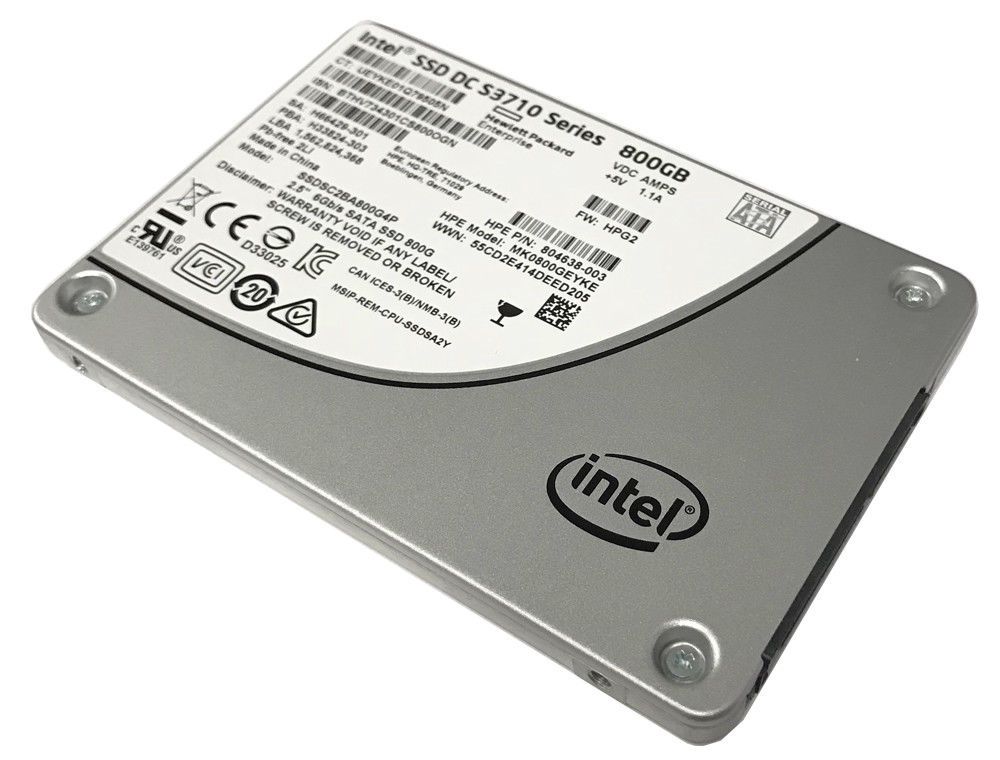 5-inch enclosures in order to fit into a smaller space.
5-inch enclosures in order to fit into a smaller space.
In the case of hard drives, this can actually be a bit of a detriment, because it makes getting a full-speed 7200 RPM HDD just a bit more expensive than it would be with a standard 3.5-inch enclosure.
2.5-inch SSDs use SATA bandwidth and connectors, just like HDDs. Because of this, they should be compatible with any PC or laptop that’s already using a hard drive.
This makes them an ideal no-fuss storage upgrade or expansion for most users, and the majority of benefits you’ll get from an SSD upgrade can be experienced within the speeds allowed by the SATA standard.
More on that in the Tiers of SSD Performance section.
2.5-inch drives were made with the goal of making drive storage smaller, but most 2.5-inch SSDs are actually smaller still.
No moving parts on the inside of this Samsung SSD, Source: Samsung
The enclosure of any given 2.5-inch SSD is mostly empty (compared to 2.5-inch HDDs, which need all the space they can get), which means there’s actually still plenty of room for improvement.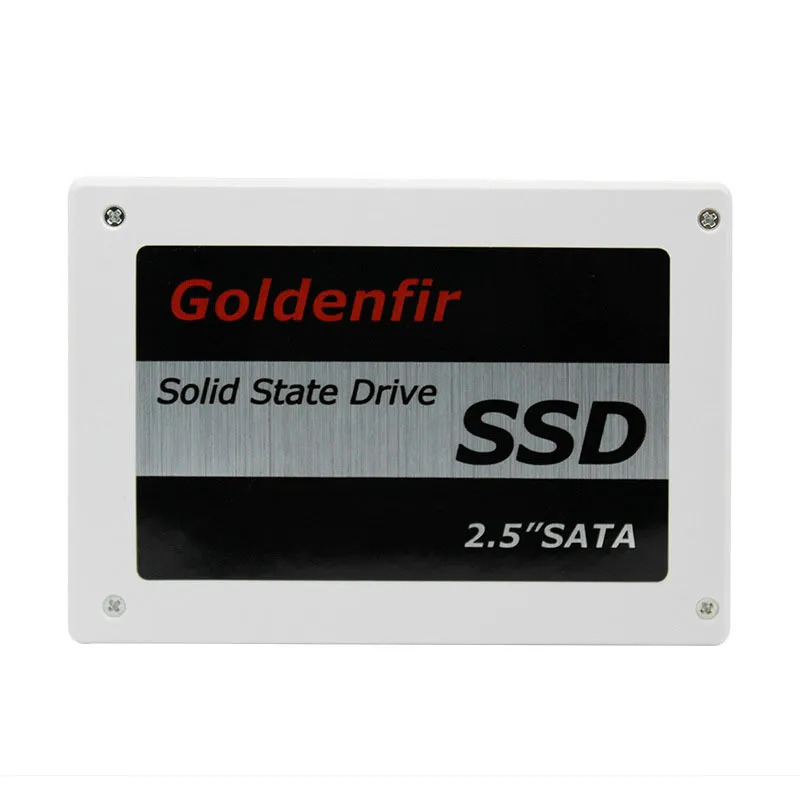
M.2 SATA SSD
That’s where the M.2 form factor comes in!
M.2 drives can come in a few different sizes, but the main standard is M.2 2280. The “22” means that the M.2 drive is 22 millimeters wide, whereas the “80” means that the M.2 drive is 80 millimeters long.
Image-Credit: Samsung
If you aren’t sure how to quantify this, just think of M.2 drives as extremely thin USB thumb drives- they’re about that length, usually. Like a stick of chewing gum.
There are other M.2 sizes, but they’re usually only relevant on a case-by-case basis: just check what form factor your particular laptop or motherboard supports before buying and you’ll be good.
While the M.2 form factor is a massive improvement over the 2.5-inch and 3.5-inch form factors required by hard drives, it doesn’t introduce an inherent boost in speed over SATA SSDs.
In fact, many M.2 drives still use SATA bandwidth, or can even be limited to SATA bandwidth by your motherboard despite being labeled as NVMe!
Be sure to double-check both your drive and PC’s specs before buying!
M.
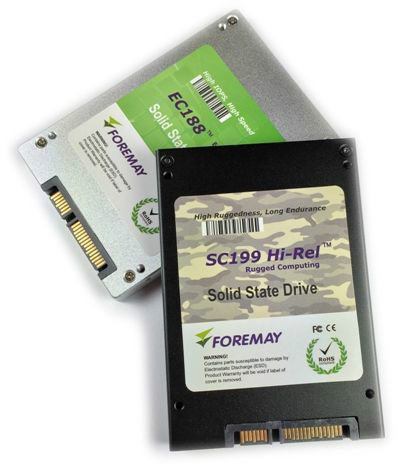 2 NVMe SSD
2 NVMe SSD
NVMe SSDs exclusively use the M.2 form factor discussed above, but with a catch: they are no longer using SATA bandwidth.
Image-Credit: Samsung
Since SATA bandwidth is no longer a limiting factor, NVMe SSDs can achieve industry-leading storage performance while remaining extremely compact and straightforward to install.
That “NVMe” stands for “Non-Volatile Memory Express”. The most important word to take note of there is “Express” because it reveals what bandwidth NVMe drives are actually using: your PCI Express bandwidth, rather than your SATA bandwidth.
In most systems, PCI Express bandwidth is used by PCI Express cards, like your graphics card or even a sound card.
This results in some pretty huge performance improvements, which we’ll hop into in the Tiers of SSD Performance section.
PCI Express SSD
Last…and actually least, since their place in the market has largely been taken over by NVMe SSDs, are proper PCI Express SSDs.
Gigabyte Aorus PCIe SSD – Image-Credit: Gigabyte
These are SSDs that come in the form of PCI Express expansion cards and are ideal for motherboards that don’t support the M.2 form factor. Other reasons for PCIe Storage can be:
- You don’t want to use your chipset PCIe Lanes for your fast storage
- You want to RAID NVMe Drives to make them even faster or more reliable
- You don’t have room to mount your M.2 Drives because they are too tall
- All your M.2 Slots are already used, but you require even more M.2 Drives
An interesting alternative, especially for that last option that we would recommend to most users in this scenario would be using an M.2 PCIe Adapter.
Tiers of SSD Performance
Now that we’ve gone over the basics of SSDs and SSD types, we can start biting into the meat of things.
SSDs are all about raw speed, and there’s actually quite a lot of variation in SSD speed from the entry-level to the high-end.
Let’s break it down!
Tier 1: SATA SSDs
First up, your standard SATA SSDs cap out at around ~550 MB/s in sequential read and write speeds. This is pretty good, mind- that’s about half a gigabyte per second!
That is the best-case scenario for SATA SSDs, though- and not all SSDs are made equal.
For instance, comparing Samsung’s EVO and QVO SSD lines reveal some pretty significant drops in performance for the QVO line since they’re reliant on a much older architecture and manufacturing process.
As a silver lining, this makes them a lot cheaper, but if you’re buying an SSD for speed alone, you may want to stick with the higher-end SATA SSD or NVMe options.
Despite there being much higher tiers of performance, SATA SSDs are still pretty great.
The majority of benefits that you will enjoy from an SSD upgrade will still be present with a SATA SSD.
Anything stored on your SATA SSD will load much, much faster than with an HDD.
This drastically cuts down on the time it takes to boot up your PC or load your games, and still makes SATA SSDs a compelling option for high-end users who want to add more storage without spending every possible dollar on NVMe.
Tier 2: NVMe Gen3 SSDs
Secondly, your NVMe Gen 3 SSDs! These cap out at around 3.5 GB/s in sequential read and write speeds, and start at around 1.5 GB/s in sequential read and write speeds!
That’s right, we’re measuring storage speed in full Gigabytes per second now.
While NVMe Gen 3 does have a fairly massive boost in performance on paper, it may be tougher to notice the differences in regular usage.
There are a few different reasons for this, but it mainly boils down to most applications not really being built around that kind of storage speed even being possible, and the fact that other components, like your CPU, can start bottlenecking loading times around this point.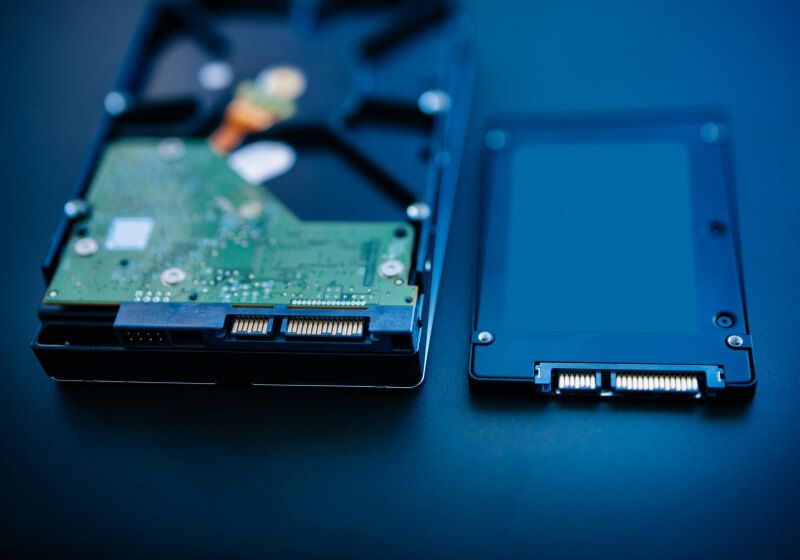
The main bottleneck being, that these speeds can only be reached for sequential file transfers. So writing or reading very large files sequentially. If you’re looking to launch an application, for example, chances are the files that need loading are randomly sized and not stored sequentially, making the process slower.
The areas where you’ll see the most benefit from an NVMe SSD: large file transfers, video editing, gaming, and high-end rendering tasks.
I especially want to emphasize the benefit to video editors for a moment, because combing through high-resolution footage in your editing software on an HDD is a nightmare.
NVMe SSDs improve that experience tremendously, allowing for smoother edits and high-quality real-time previews while still enjoying features like 4K footage.
Tier 3: NVMe Gen4 SSDs
NVMe Gen 4 SSDs are like NVMe Gen 3 SSDs, but, …more. Specifically, these cap out at around 7 GB/s at the time of writing!
There may yet be room for improvement with this and the upcoming NVMe Gen 5 (PCIe 5. 0) standard, but we’re actually beginning to run into a different issue with storage this fast.
0) standard, but we’re actually beginning to run into a different issue with storage this fast.
Basically, NVMe SSDs are getting so fast that they are beginning to require dedicated heatsinks to stay cool enough to keep operating at peak performance.
Everything said about NVMe Gen 3 SSDs applies here…with a few caveats. For one, if you had trouble noticing the difference before, this still isn’t going to change very much.
We generally don’t recommend NVMe Gen 4 SSDs for users who don’t actually need to make use of such ridiculously high-end speeds. This is a product for high-end enthusiasts and professionals, generally speaking.
However, you may still be forced to buy an NVMe Gen 4 SSD despite not needing the highest-end speeds, because devices such as current generation consoles require them!
The PlayStation 5 requires NVMe Gen 4 SSDs with a speed of at least 5.5 GB/s for internal storage upgrades, making NVMe Gen 4 surprisingly compelling for console gamers.
As more games are built around speeds like these, we expect this tier of storage to become more popular among PC gamers, too.
FAQ
Is an Intel Optane Drive an SSD?
Sort of! They’re technically NVMe SSDs, but they aren’t used like standard SSDs are. Instead, they’re more like extremely fast RAM for standard hard drives.
You can use them as an SSD, but doing so would be very ineffective from a cost standpoint because Optane SSDs are extremely expensive.
In return, though, they’re able to offer SSD-tier performance while you’re still using your standard hard drives, and that can be fairly compelling for some use cases.
Most people would probably be better off just getting a SATA SSD, but if you really want to accelerate your existing SSD storage, here’s my recommended Intel Optane SSD model!
Which SSD Type Is Compatible With My PC?
Well, a SATA SSD is definitely compatible with your PC, because it’s compatible with every PC.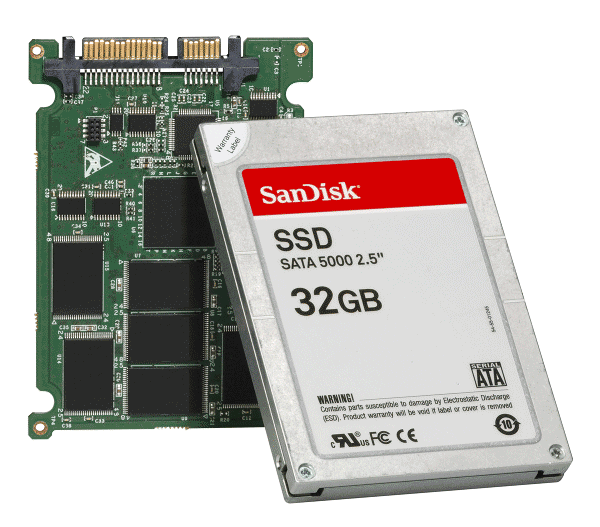
For the M.2 and NVMe drives, you’ll want to take another look at your motherboard in order to verify compatibility.
For instance, some motherboards will have 2 M.2 slots, but only one of them may actually support NVMe bandwidth.
Some may have M.2 slots without supporting NVMe bandwidth at all, and some still may not even have M.2 slots because they were manufactured before M.2 was a prevalent thing in the market.
Fortunately, as long as you have a free PCI Express slot, you can get around having an old PC and still get some pretty superb storage by using an adapter.
If you’re looking at adding Storage, check out our guide on how many SSDs you can have.
Can I Get An External SSD?
Yes! External SSDs are a surprisingly good option, especially for users who don’t have room for more internal storage.
However, you’ll need at least a USB 3.1/3.2 Gen 1 connector in order to utilize SATA SSDs, and Thunderbolt 3 (sometimes over USB-C) is required to utilize NVMe Gen3-equivalent SSDs.
If your PC does not support these connection standards, then you won’t be able to get an external SSD.
What Are The Best SSDs?
The best SSDs are NVMe SSDs.
Even if you aren’t going for the absolute highest-end, you can get an NVMe SSD for close to the same price as a SATA SSD while still getting some pretty major storage performance improvements.
If you need help finding the best NVMe SSD for your needs, here’s our detailed article on the best NVMe drives on the market!
Over to You
If you have any other questions about the types of SSDs, let us know in the comments below or our forum!
CGDirector is Reader-supported. When you buy through our links, we may earn an affiliate commission.
Which Type of SSD is the Fastest? – Patriot Memory Store
When considering storage for your computer, you need to consider a lot of factors, not just the amount of storage the drive has.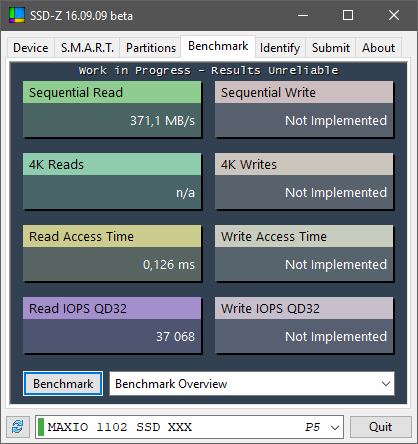 When you choose the type of SSD for your device, you need to consider the speed, readability, noise, and power usage.
When you choose the type of SSD for your device, you need to consider the speed, readability, noise, and power usage.
A solid state drive (SSD) is an extra storage unit for your computer that stores data using flash memory. Its ability to read and write data runs at a speed several times faster than a hard drive. Your applications will load a lot faster and you might notice how smooth your computer runs when you turn it on.
If you are still using a hard drive, you might want to consider upgrading to an SSD, especially if you are a gamer. You will notice the difference in your computer’s responsive time after you make the switch. SSDs require less power to operate so it won’t kill your battery.
There are two different types of SSDs: Serial Advanced Technology Attachment SSDs (SATA) and Peripheral Component Interconnect express SSDs or Non-Volatile Memory express SSDs (PCIe/NVMe/PCIe-NVMe).
Serial Advanced Technology Attachment SSDS (SATA)
SATA SSDs tend to be the slower of the two since it uses the same interface as hard drives.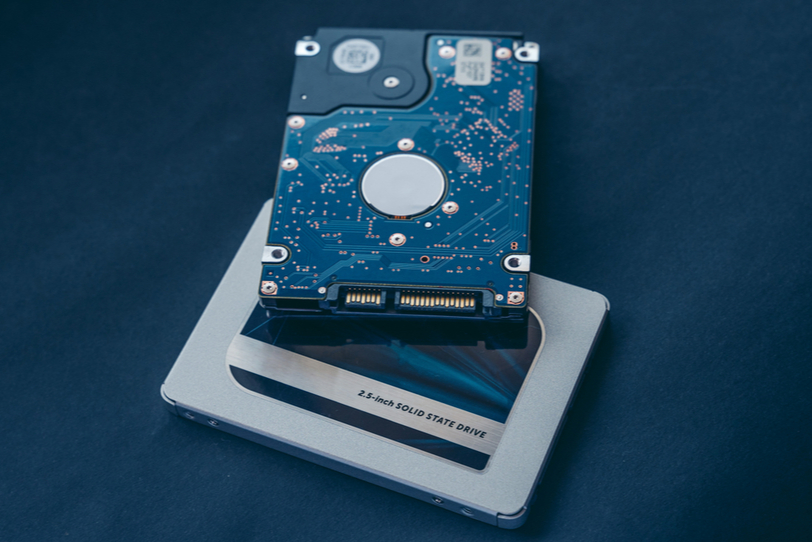 However, even though they may be the slowest grade, they will still speed your computer up four or five times more than a hard drive would. Your chances of finding someone using a SATA are still high because they have been around for quite some time.
However, even though they may be the slowest grade, they will still speed your computer up four or five times more than a hard drive would. Your chances of finding someone using a SATA are still high because they have been around for quite some time.
The most common type of SATA is the 2.5 inch SATA SSD since it can be used on older computers. The average speed of SATAs are around 500-550 Mbps and will max out at 600 Mbps or 6 Gbps.
Mini-SATA SSDs
mSATA SSDs are just smaller versions of SATA SSDS. They are mainly used for smaller devices like phones, tablets, notebooks, and very thin laptops but that doesn’t mean you can’t use it for your computer. They still have all the specifications of a 2.5 inch SATA SSD with the maximum speed of 600 Mbps.
M.2 SSDs
M.2 SSDs are small and rectangular sticks of ram most commonly used in mobile devices and thin laptops because of their flat and compact card format. However, they can still be used on computers only if your motherboard has the slot for it. They are faster and thus more expensive than SATA SSDs and can store up to 2 terabytes of data. The most common sizes for M.2 SSDs are 2242, 2260, 2280, and 22110. The numbers indicate the size of the SSDs by width and length.
They are faster and thus more expensive than SATA SSDs and can store up to 2 terabytes of data. The most common sizes for M.2 SSDs are 2242, 2260, 2280, and 22110. The numbers indicate the size of the SSDs by width and length.
For example, an M.2 2280 is 22mm (length) x 80mm (width). An M.2 2242 is 22mm x 42mm.
Peripheral Component Interconnect Express SSDs (PCIe)
PCIe SSDs have more bandwidth and will provide three to four times the speed and performance than SATA SSDs, which means that PCIe SSDs are the fastest type of SSDs. They are high-speed interface and performance expansion cards that are plugged into the motherboard and will generally go along well with graphics cards and sound cards.
PCIe SSDs are expansion cards that connects your computer to its peripherals. They are usually recommended if you are a gamer since you want the fastest performance speed when playing your game. As long as you don’t care about the price, you can get a PCIe SSD for your computer.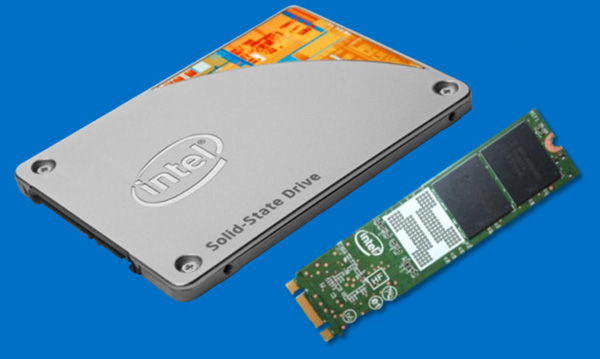 PCIe SSDs tend to be more expensive than SATA SSDs for obvious reasons, but not if you want more storage space compared to performance, then you would be using SATA.
PCIe SSDs tend to be more expensive than SATA SSDs for obvious reasons, but not if you want more storage space compared to performance, then you would be using SATA.
Non-Volatile Memory Express (NVMe)
NVMe are built especially for flash and new generation SSDs that deliver the best performance and have the highest response times. It works well with PCIe SSDs to transfer data rapidly to and from your computer and storage card.
NVMe SSDs transfers data at a high performance speed of around 3,000-3,500 Mbps or 3-3.5 Gbps. You can transfer a 30 GB file to your computer in about 15 seconds or less.
Add-In Card SSDs (AIC)
SSD AICs are generally supposed to have a much faster speed than most of the other drives because it operates on a PCIe express bus rather than a SATA. As mentioned above, PCIe is the faster type of SSD and therefore will have a higher performance speed than SATA so AICs would have the potential to be a lot faster. Also, AICs are more preferred than M. 2 drives since they can access more lanes on PCIe. They can only be used on desktops so their drive plugs into the motherboard and are most commonly used for RAID controllers or graphic cards.
2 drives since they can access more lanes on PCIe. They can only be used on desktops so their drive plugs into the motherboard and are most commonly used for RAID controllers or graphic cards.
Hard Drive Disks (HDD)
Hard drive disks, the traditional storage device that operates inside a computer. They cost a lot less because of their slower performance, but they have high battery drainage. Additionally, they are generally used for a more practical storage card to store file and media like photos or videos.
HDDs, despite their slow speeds, can store a lot more data than SSDs. SSDs have a storage capacity range of 64 GB to 4 TB while HDDs can store 250 GB to 14 TB of data.
Which SSD Should You Use?
The type of SSD you should use depends on your device. For computers, check your motherboard and find out what kind of slots you have. Different devices will support different types of drives.
If you are a gamer and want to optimize your gaming PC, you will likely get the PCIe SSD because of the faster interface.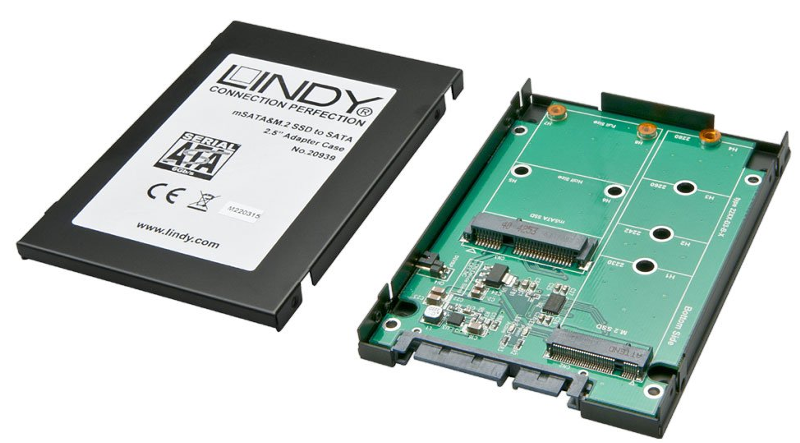 Your games will start up and perform faster if they are installed on an SSD than a traditional hard drive. Gamers require a computer drive that can access data very quickly. Additionally, if you have ever played games in general, you’ll know that games contain large amounts of data like audio, high-resolution graphics, and more, sometimes coming up to more than 100 GB of data.
Your games will start up and perform faster if they are installed on an SSD than a traditional hard drive. Gamers require a computer drive that can access data very quickly. Additionally, if you have ever played games in general, you’ll know that games contain large amounts of data like audio, high-resolution graphics, and more, sometimes coming up to more than 100 GB of data.
Just downloading the game isn’t all the data the game keeps. When you play your game, data is also stored. Anytime your player levels up in a game, data is stored. Anytime your player interacts with another player, data is stored. Anytime your player starts another mission, data is stored. Data is written down for everything.
If your game takes two to three minutes to load from your HDD, think about how much faster it will take if it was on an SSD. The longer the game takes to load, the more disrupted your gameplay will be.
For everyday performance that does not require high-intensity data speed transfer, you can get an SATA SSD.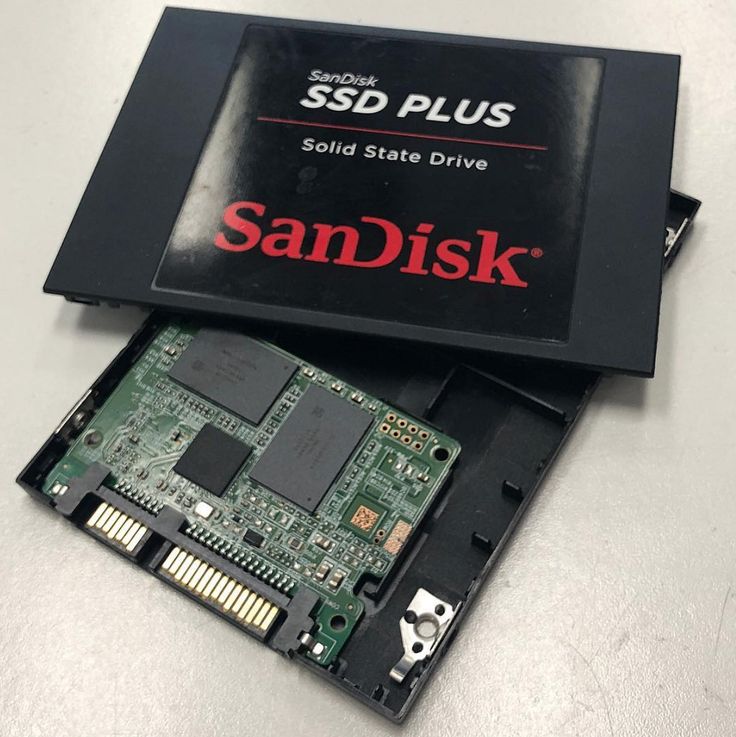
There are still the traditional HDDs that you can use to store your data. It just won’t transfer as fast and will probably take up more battery life. Keep in mind that drives that have a lower storage capacity have fewer memory modules and will in turn have slower performance. HDDs are generally for those who want to store a lot of old pictures and videos that they won’t have to check up on.
As to whether your data will be corrupted transferring depends on the drive’s readability. Usually, SSDs are more reliable because they don’t need any moving parts to operate while HDDs need to write your data onto a disk, thus risking the chance of corrupt data.
The prices for solid states drives have decreased dramatically over the years so you can upgrade to one without a problem, you just have to make sure your device is compatible with the drive.
How to Buy the Right SSD: A Guide for 2021
(Image credit: Tom’s Hardware)
Getting one of the best SSDs for your system is key because the easiest way to slow down a PC with one of the best CPUs for Gaming is to pair it with slow storage. Your processor can handle billions of cycles a second, but it often spends a lot of time waiting for your drive to feed it data. Hard drives are particularly sluggish because they have platters that have to spin up and a read / right arm that has to find its way physically to the data sectors you’re currently seeking. To get optimal performance, you need a good solid-state drive (SSD).
Your processor can handle billions of cycles a second, but it often spends a lot of time waiting for your drive to feed it data. Hard drives are particularly sluggish because they have platters that have to spin up and a read / right arm that has to find its way physically to the data sectors you’re currently seeking. To get optimal performance, you need a good solid-state drive (SSD).
You can check out our feature for much more on the differences between hard drives and SSDs. While SSDs are almost always faster, there are still instances (like bulk storage) where hard drives are definitely worth considering. Because 10TB hard drives can be had for under $200 and a 4TB SSD will set you back over $400.
If you already know about drive types and want specific recommendations, check out our Best SSDs page. And if you’re after an external drive or SSD for portable storage or back up, be sure to check our Best External Drives page. But if you don’t have a PhD in SSD, here are a few things you need to consider when shopping.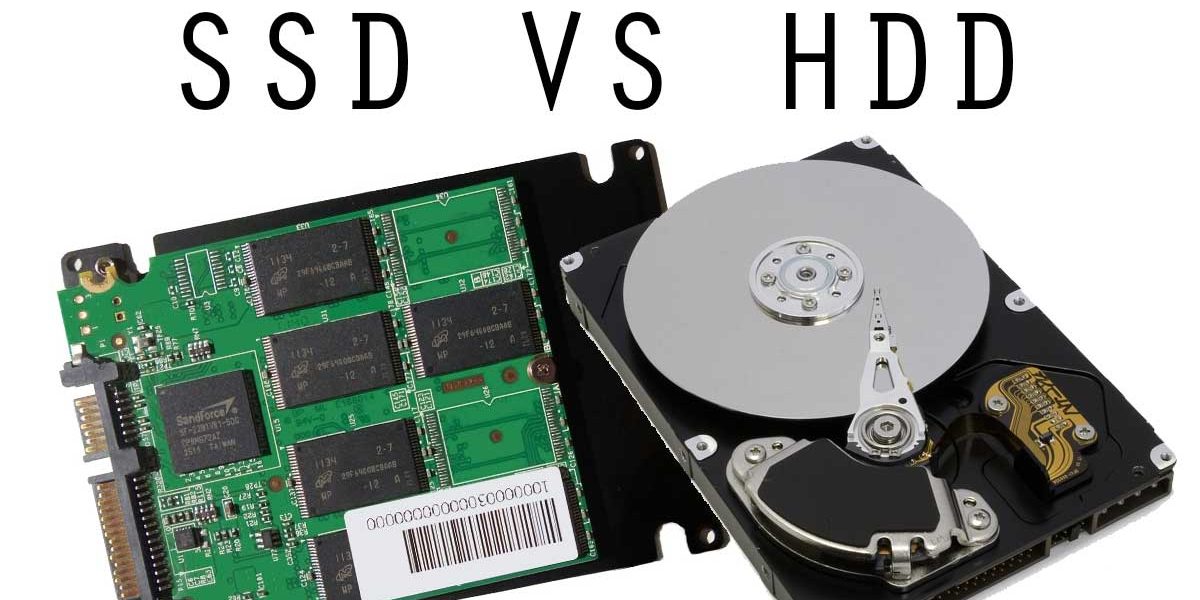
As drives like Intel’s 660p and its successor the Intel 665p start to undercut mainstream drives on the old SATA interface while delivering more speed, this could be the beginning of the end of our old friend, Serial ATA. That said, Samsung recently released the 870 EVO, so SATA isn’t dead yet. And existing SATA drives will have to continue falling in price as well, in order to at least compete on price, since they can’t hope to keep up with NVMe drives on performance.
But NVMe PCIe 3.0 drives, once the fastest storage around, have been outclassed by PCIe 4.0 M.2 SSDs from the likes of Gigabyte, Corsair, Patriot and Samsung. These drives indeed up sequential speeds dramatically (thanks to a doubling of the PCIe bus bandwidth). But you’ll need an AMD X570 or B550 motherboard to run one of these drives at their top speed, or an Intel Z590 motherboard paired with one of Intel’s upcoming Rocket Lake-S processors. And in many ways, beyond the obvious bump in sequential performance, users might not see much in the way of real-world benefits from these drives.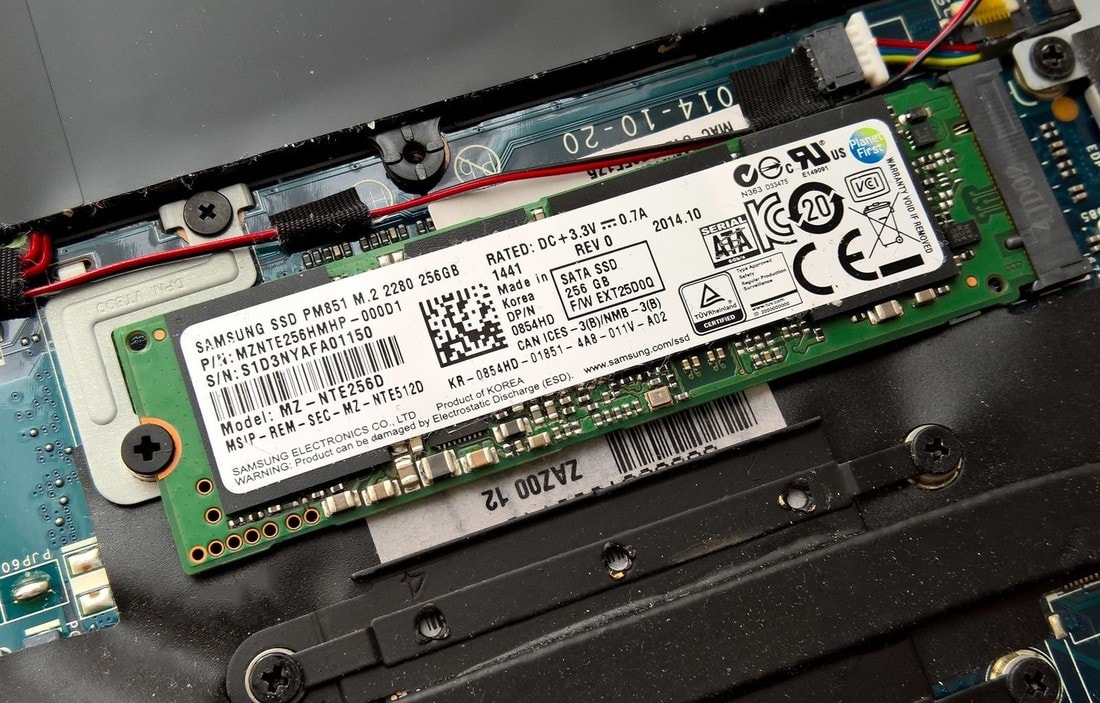 But there’s no doubt that the next generation of PCIe 4.0 drives, like WD Black’s SN850, are impressively agile.
But there’s no doubt that the next generation of PCIe 4.0 drives, like WD Black’s SN850, are impressively agile.
TLDR
Here are four quick tips, followed by our detailed answers to many FAQs:
- Know your computer: Find out if you have slots for M.2 drives on your motherboard. If not, you may need a 2.5-inch drive instead.
- 500GB to 1TB capacity: Don’t even consider buying a drive that has less than 256GB of storage. 500GB offers a good balance between price and capacity. And as 1TB drives slide below the $100/£100 price point, they’re great, roomy options as well.
- SATA is cheaper but slower: If your computer supports NVMe/PCIe or Optane drives, consider buying a drive with one of these technologies. However, SATA drives are more common, usually cost less and still offer excellent performance for common applications.
- Any SSD is better than a hard drive: Even the worst SSD is at least three times as fast as a hard drive in most common use scenarios.
Depending on the workload, the performance delta between good and a great SSDs can be subtle.
How much can you spend?
Most consumer drives range from 120GB to 2TB. While 120GB drives are the cheapest, they aren’t roomy enough to hold a lot of software and are usually slower than their higher-capacity counterparts. Many companies have begun phasing out those low capacity. It costs as little as $15 extra to step up from 120 to 250GB size, and that’s money well spent. The delta between 250GB and 500GB drives can be small as well. The sweet spot between price, performance and capacity for most users used to be 500GB, but increasingly 1TB is becoming the better choice —particularly when 1TB drives slip to $100 or less.
There are also an increasing number of drives (primarily from Samsung) with capacities above 2TB. But they’re typically extremely expensive in the extreme (over $400/£400), so they’re really only worthwhile for professional users who need space and speed and aren’t averse to paying for it.
What kind of SSD does your computer support?
Solid-state drives these days come in several different form factors and operate across several possible hardware and software connections. What kind of drive you need depends on what device you have (or are intending on buying). If you own one of the best gaming PCs or are building a PC with a recent mid-to-high-end motherboard, your system may be able to incorporate most (or all) modern drive types.
Also, modern slim laptops and convertibles have mostly shifted solely to the gum-stick-shaped M.2 form factor, with no space for a traditional 2.5-inch laptop-style drive. And in an increasing number of cases, laptop makers are soldering the storage directly to the board, so you can’t upgrade at all. So you’ll definitely want to consult your device manual or check Crucial’s Advisor Tool to sort out what your options are before buying.
Which form factor do you need?
SSDs come in three main form factors, plus one uncommon outlier.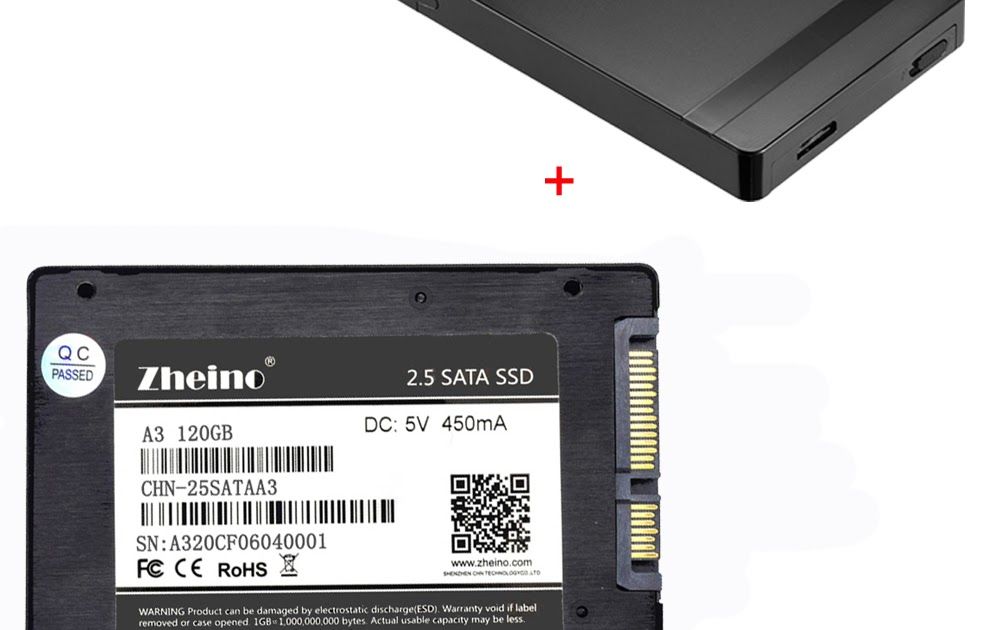
Types of SSDs.
- 2.5-inch Serial ATA (SATA): The most common type, these drives mimic the shape of traditional laptop hard drives and connect over the same SATA cables and interface that any moderately experienced upgrader should be familiar with. If your laptop or desktop has a 2.5-inch hard drive bay and a spare SATA connector, these drives should be drop-in-compatible (though you may need a bay adapter if installing in a desktop with only larger, 3.5-inch hard drive bays free).
- SSD Add-in Card (AIC): These drives have the potential to be much faster than most other drives, as they operate over the PCI Express bus, rather than SATA, which was designed well over a decade ago to handle spinning hard drives. They can also access more PCIe lanes than most M.2 drives. AIC drives plug into the slots on a motherboard that are more commonly used for the best graphics cards or RAID controllers. Of course, that means they’re only an option for desktops, and you’ll need an empty PCIe x4 or x16 slot to install them.

If your desktop is compact and you already have a graphics card installed, you may be out of luck. But if you do have room in your modern desktop and a spare slot, these drives can be among the fastest available (take the Intel Optane 900p, for example), due in large part to their extra surface area, allowing for better cooling. Moving data at extreme speeds generates a fair bit of heat.
- M.2 SSDs: About the shape of a stick of RAM but much smaller, M.2 drives have become the standard for slim laptops, but you’ll also find them on most desktop motherboards. Many high-end boards even have two or more M.2 slots, so you can run the drives in RAID.
While most M.2 drives are 22mm wide and 80mm long, there are some that are shorter or longer. You can tell by the four or five-digit number in their names, with the first two digits representing width and the others showing length. The most common size is labeled M.2 Type-2280. Though laptops will usually only work with one size, many desktop motherboards have anchor points for longer and shorter drives.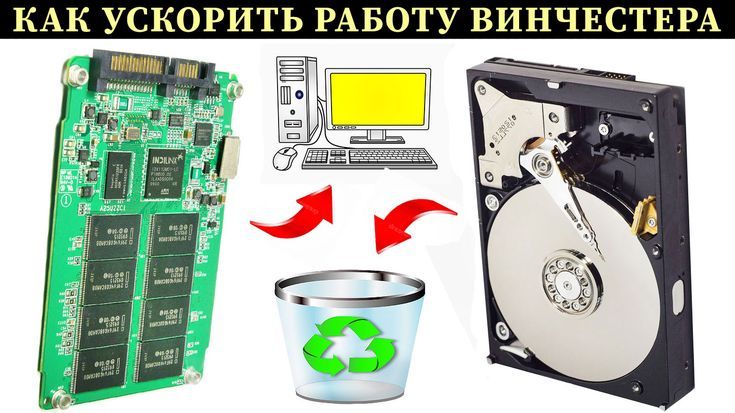
The largest M.2 drives are 2, 4, or even 8TB. So, if you have a generous budget and need a ton of storage space, there’s an M.2 for you.
- U.2 SSDs: At first glance, these 2.5-inch components look like traditional SATA hard drives. However, they use a different connector and send data via the speedy PCIe interface, and they’re typically thicker than 2.5-inch hard drives and SSDs. U.2 drives tend to be more expensive and higher-capacity than regular M.2 drives. Servers that have lots of open drive bays can benefit from this form factor, though it’s extremely uncommon in consumer desktops.
M.2 SSDs (Image credit: Tom’s Hardware)
Today’s best Adata XPG SX8200 Pro (1TB) deals
Reduced Price
$91
$77.67
View
Reduced Price
$119. 99
$92.99
View
$184.50
View
Show More Deals
Do you want a drive with a SATA or PCIe interface?
Strap in, because this bit is more complicated than it should be. As noted earlier, 2.5-inch SSDs run on the Serial ATA (SATA) interface, which was designed for hard drives (and launched way back in 2000), while add-in-card drives work over the faster PCI Express bus, which has more bandwidth for things like graphics cards.
M.2 drives can work either over SATA or PCI Express, depending on the drive. And the fastest M.2 drives also support NVMe, a protocol that was designed specifically for fast modern storage. The tricky bit (OK, another tricky bit) is that an M.2 drive could be SATA-based, PCIe-based without NVMe support, or PCIe-based with NVMe support.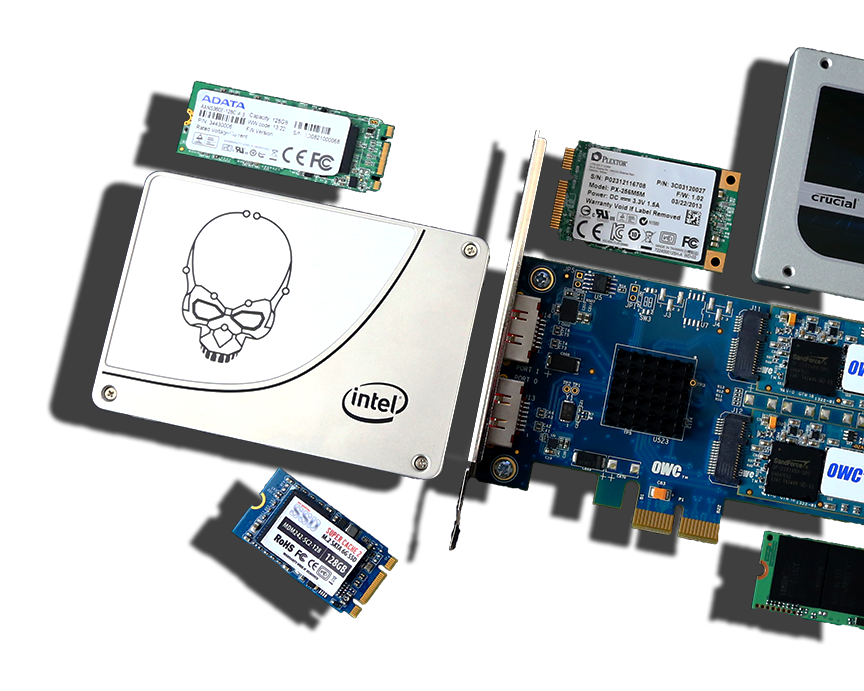 That said, most high-end M.2 SSDs launched in recent years support NVMe.
That said, most high-end M.2 SSDs launched in recent years support NVMe.
Both M.2 drives and the corresponding M.2 connectors on motherboards look very similar, regardless of what they support. So be sure to double-check the manual for your motherboard, laptop, or convertible, as well as what a given drive supports, before buying.
If your daily tasks consist of web browsing, office applications, or even gaming, most NVMe SSDs aren’t going to be noticeably faster than less-expensive SATA models. If your daily tasks consist of heavier work, like large file transfers, videos or high-end photo editing, transcoding, or compression/decompression, then you would be better served stepping up to an NVMe SSD. These SSDs provide up to five times more bandwidth than SATA models (and double that if you opt for a PCIe 4.0 NVMe drive), which boosts performance in heavier productivity applications.
Also, some NVMe drives (like Intel’s SSD 660p) are edging below the price of many SATA drives.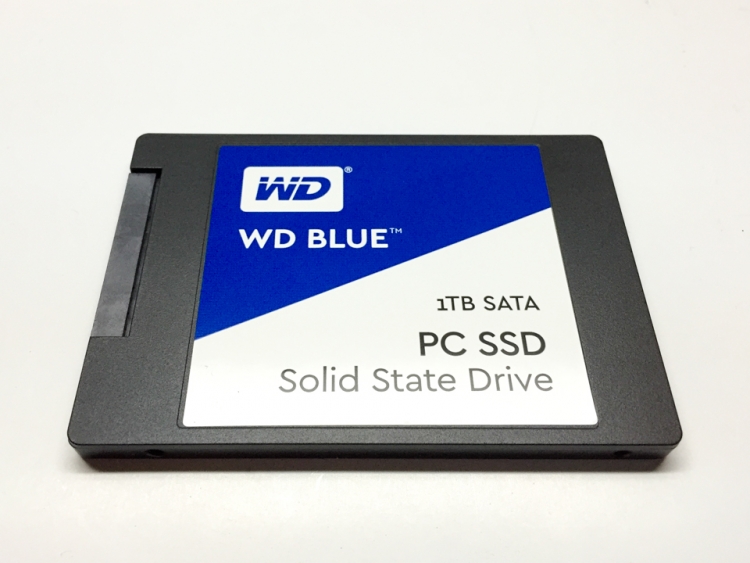 So if your device supports NVMe and you find a good deal on a drive, you may want to consider NVMe as an option even if you don’t have a strong need for the extra speed.
So if your device supports NVMe and you find a good deal on a drive, you may want to consider NVMe as an option even if you don’t have a strong need for the extra speed.
What capacity do you need?
- 128GB Class: Stay away. These low-capacity drives tend to have slower performance, because of their minimal number of memory modules. Also, after you put Windows and a couple of games on it, you’ll be running out of space. Plus, you can step up to the next level for as little as $10 more.
- 250GB Class: These drives are cheaper than their larger siblings, but they’re still quite cramped, particularly if you use your PC to house your operating system, PC games, and possibly a large media library. If there’s wiggle room in your budget, stepping up at least one capacity tier to a 500GB-class drive is advisable.
- 500GB Class: Drives at this capacity level offer a reasonable amount of room at decent prices, although 1TB drives are becoming increasingly appealing.

- 1TB Class: Unless you have massive media or game libraries, a 1TB drive should give you enough space for your operating system and primary programs, with plenty of room for future software and files.
- 2TB Class: If you work with large media files, or just have a large game library that you want to be able to access without lots of install shuffling, a 2TB drive is often worth the price premium.
- 4TB Class (and above): You have to really need this much space on an SSD to splurge on one of these. A 4TB SSD will be quite expensive — usually over $400/£500 — and you won’t have many options. Samsung has been selling 4TB consumer drives for years now, but many other companies have stuck to the 2TB limit unless you step up to pricier enterprise storage.
If you’re a desktop user, or you have a gaming laptop with multiple drives and you want lots of capacity, you’re better off opting for a pair of smaller SSDs, which will often save you hundreds of dollars while still offering up roughly the same storage space and speed.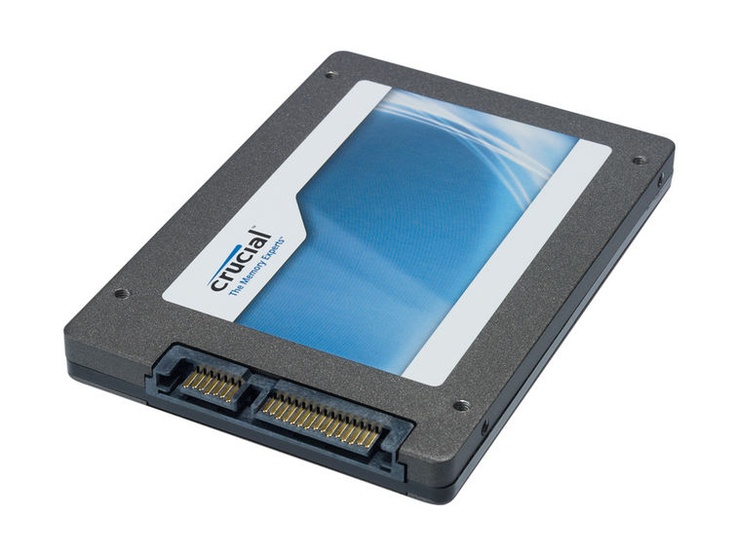 Until pricing drops and we see more competition, 4TB and larger drives will be relegated to professionals and enthusiasts with very deep pockets.
Until pricing drops and we see more competition, 4TB and larger drives will be relegated to professionals and enthusiasts with very deep pockets.
What about power consumption?
If you’re a desktop user after the best possible performance, then you probably don’t care how much juice you’re using. But for laptop and convertible tablet owners, drive efficiency is more important than speed—especially if you want all-day battery life.
Choosing an extremely efficient drive like Samsung’s 860 EVO over a faster-but-power-hungry NVMe drive (like, say, the Samsung 960 EVO) can gain you significantly more unplugged run time. And higher-capacity models can draw more power than less-spacious drives, simply because there are more NAND packages on bigger drives to write your data to.
While the above advice is true in a general sense, some drives can buck trends, and technology is always advancing and changing the landscape. If battery life is key to your drive-buying considerations, be sure to consult the power consumption testing we do on every SSD we test.
What controller should your SSD have?
Think of the controller as the processor of your drive. It routes your reads and writes and performs other key drive performance and maintenance tasks. It can be interesting to dive deep into specific controller types and specs. But for most people, it’s enough to know that, much like PCs, more cores are better for higher-performing, higher-capacity drives.
While the controller obviously plays a big role in performance, unless you like to get into the minute details of how specific drives compare against each other, it’s better to check out our reviews to see how a drive performs overall, rather than focusing too much on the controller.
Which type of storage memory (NAND flash) do you need?
When shopping for an SSD for general computing use in a desktop or laptop, you don’t expressly need to pay attention to the type of storage that’s inside the drive. In fact, with most options on the market these days, you don’t have much a choice, anyway.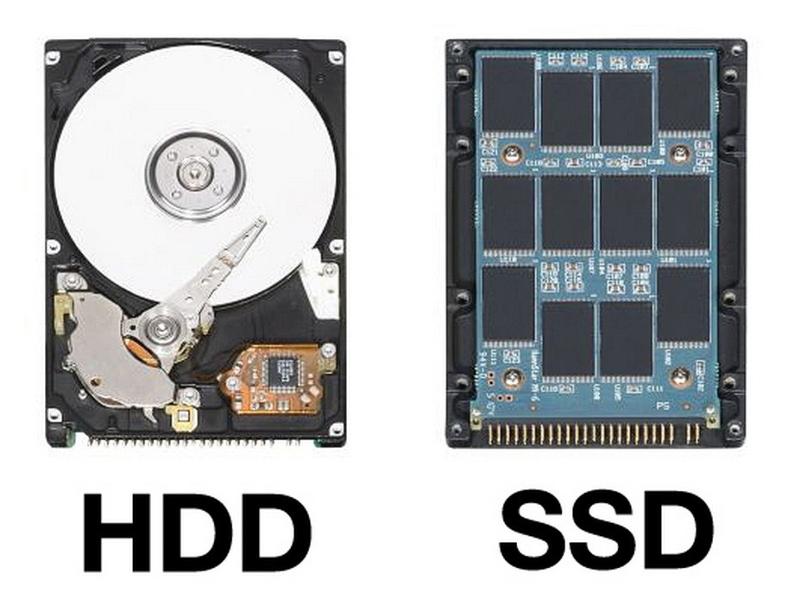 But if you’re curious about what’s in those flash packages inside your drive, we’ll walk you through various types below. Some of them are far less common than they used to be, and some are becoming the de facto standard.
But if you’re curious about what’s in those flash packages inside your drive, we’ll walk you through various types below. Some of them are far less common than they used to be, and some are becoming the de facto standard.
- Single-Level Cell (SLC) flash memory came first and was the primary form of flash storage for several years. Because (as its name implies) it only stores a single bit of data per cell, it’s extremely fast and lasts a long time. But, as storage tech goes these days, it’s not very dense in terms of how much data it can store, which makes it very expensive. At this point, beyond extremely pricey enterprise drives and use as small amounts of fast cache, SLC has been replaced by newer, denser types of flash storage tech.
- Multi-Layer Cell (MLC) came after SLC and for years was the storage type of choice for its ability to store more data at a lower price, despite being slower. To get around the speed issue, many of these drives have a small amount of faster SLC cache that acts as a write buffer.
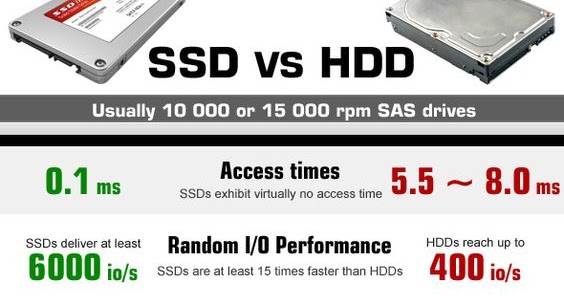 Today, apart from a few high-end consumer drives, MLC has been replaced by the next steps in NAND storage tech, TLC and QLX.
Today, apart from a few high-end consumer drives, MLC has been replaced by the next steps in NAND storage tech, TLC and QLX.
- Triple-Level Cell (TLC) flash is slower still than MLC, as its name implies. It’s also more data-dense, which brought about more spacious, affordable drives. Most TLC drives (except some of the least-expensive models) also employ some sort of caching tech, because TLC on its own without a buffer often is not significantly faster than a hard drive.
For mainstream users running consumer apps and operating systems, this isn’t a problem because the drive isn’t typically written to in a sustained enough way to saturate the faster cache. For years, TLC was the technology of choice for mainstream and budget drives, but it too has been supplanted by QLC.
- Quad-Level Cell (QLC) tech has become the de facto standard for the next stage of the solid-state storage revolution. And as the name implies, it should lead to less-expensive and more-spacious drives thanks to an increase in density.
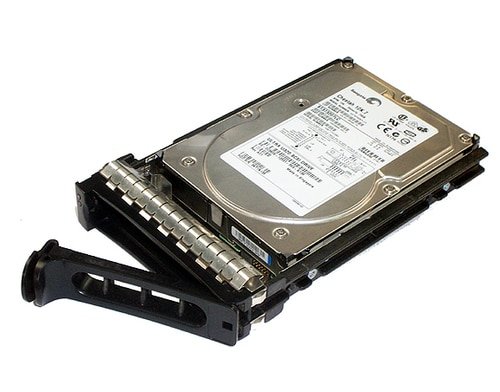 But this often comes with a lower endurance rating (see below) as well as slower sustained write speeds once the drive’s cache fills up.
But this often comes with a lower endurance rating (see below) as well as slower sustained write speeds once the drive’s cache fills up.
What about endurance?
These are two other areas where, for the most part, buyers looking for a drive for general-purpose computing don’t need to dive too deep, unless they want to. All flash memory has a limited life span, meaning after any given storage cell is written to a certain number of times, it will stop holding data. And drive makers often list a drive’s rated endurance in total terabytes written (TBW), or drive writes per day (DWPD).
SATA NVMe SSD (Image credit: Samsung)
Today’s best Samsung 860 EVO (250GB) deals
$59.99
View
$101
View
No price information
Check Amazon
Show More Deals
But most drives feature “over provisioning,” which portions off part of the drive’s capacity as a kind of backup.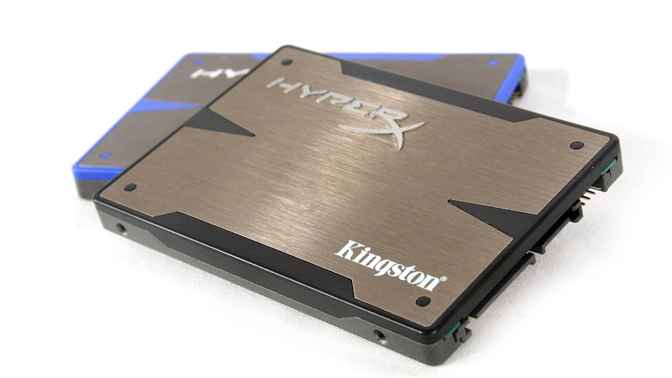 As the years pass and cells start to die, the drive will move your data off the worn-out cells to these fresh new ones, thereby greatly extending the usable lifespan of the drive. Generally, unless you’re putting your SSD into a server or some other scenario where it’s getting written to nearly constantly (24/7), all of today’s drives are rated with enough endurance to function for at least 3-5 years, if not more.
As the years pass and cells start to die, the drive will move your data off the worn-out cells to these fresh new ones, thereby greatly extending the usable lifespan of the drive. Generally, unless you’re putting your SSD into a server or some other scenario where it’s getting written to nearly constantly (24/7), all of today’s drives are rated with enough endurance to function for at least 3-5 years, if not more.
If you plan on using your drive for much longer than that, or you know that you’ll be writing to the drive far more than the average computer user, you’ll probably want to avoid QLC drives in particular, and invest in a model with higher-than-average endurance ratings, and/or a longer warranty. Samsung’s Pro drives, for instance, typically have high endurance ratings and long warranties. But again, the vast majority of computer users should not have to worry about a drive’s endurance.
Do you need a drive with 3D flash? And what about layers?
Here again is a question that you don’t have to worry about unless you’re curious. The flash in SSDs used to be arranged in a single layer (planar). But starting with Samsung’s 850 Pro in 2012, drive makers began stacking storage cells on top of each other in layers. Samsung calls its implementation of this tech “V-NAND” (vertical NAND), Toshiba/Kioxia calls it “BiCS FLASH.” Most other companies just call it what it is: 3D NAND. As time progresses, drive makers are stacking more and more layers on top of each other, leading to denser, more spacious, and less-expensive drives.
The flash in SSDs used to be arranged in a single layer (planar). But starting with Samsung’s 850 Pro in 2012, drive makers began stacking storage cells on top of each other in layers. Samsung calls its implementation of this tech “V-NAND” (vertical NAND), Toshiba/Kioxia calls it “BiCS FLASH.” Most other companies just call it what it is: 3D NAND. As time progresses, drive makers are stacking more and more layers on top of each other, leading to denser, more spacious, and less-expensive drives.
At this point, the vast majority of current-generation consumer SSDs are made using some type of 3D storage. These days, many drives use 96-layer or 128-layer NAND, and technologies to add more layers are always in the works. But apart from looking at small letters on a spec sheet or box, the only reason you’re likely to notice that your drive has 3D NAND is when you see the price. 3D-based drives tend to cost significantly less than their predecessors at the same capacity because they’re cheaper to make and require fewer flash packages inside the drive for the same amount of storage.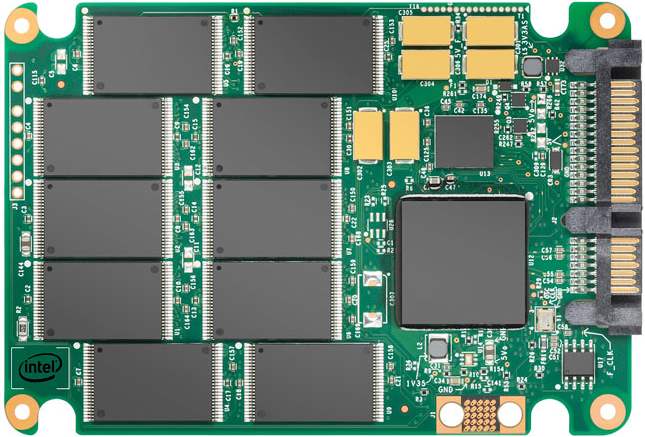
What about 3D XPoint/Optane?
3D XPoint, (pronounced “cross point”), created in a partnership between Intel and Micron (maker of Crucial-branded SSDs), is a storage technology that can be much faster than any existing traditional flash-based SSD (think performance similar to DRAM), while also increasing endurance for longer-lasting storage.
Add-In Card (Image credit: Intel)
Today’s best Intel Optane SSD 905P (1TB) deals
29 Amazon customer reviews
☆☆☆☆☆
$2,097.96
View
No price information
Check Amazon
While Micron was heavily involved in the development of 3D Xpoint, and intends to eventually bring it to market, as of this writing, Intel is the only company currently selling the technology to consumers, under its Optane brand. Optane Memory is designed to be used as a caching drive in tandem with a hard drive or a slower SATA-based SSD, while the Optane 900p (an add-in card) / 905P are standalone drives, and the Intel 800p can be used as either a caching drive or a standalone drive (though cramped capacities make it more ideal for the former).
Optane Memory is designed to be used as a caching drive in tandem with a hard drive or a slower SATA-based SSD, while the Optane 900p (an add-in card) / 905P are standalone drives, and the Intel 800p can be used as either a caching drive or a standalone drive (though cramped capacities make it more ideal for the former).
Optane drives have much potential, both on the ultra-fast performance front and as a caching option for those who want the speed of an SSD for frequently used programs but the capacity of a spinning hard drive for media and game storage.
But Intel announced in early 2021 that it was discontinuing standalone Optane drives. So unless and until Micron sees fit to bring Xpoint to consumers, the technology seems to be at a dead-end for enthusiasts looking for extreme storage. Perhaps Samsung’s Z-NAND tech will step up to take Optane’s place.
Now that you understand all the important details that separate SSDs and SSD types, your choices should be clear. Remember that high-end drives, while technically faster, won’t often feel speedier than less-spendy options in common tasks.
Remember that high-end drives, while technically faster, won’t often feel speedier than less-spendy options in common tasks.
So unless you’re chasing extreme speed for professional or enthusiast reasons, it’s often best to choose an affordable mainstream drive that has the capacity you need at a price you can afford. Stepping up to any modern SSD over an old-school spinning hard drive is a huge difference that you’ll instantly notice. But as with most PC hardware, there are diminishing returns for mainstream users as you climb up toward the top of the product stack.
MORE: Best SSDs
MORE: Best External Hard Drives and Portable SSDs
MORE: How to Sell Your Used PC Components
After a rough start with the Mattel Aquarius as a child, Matt built his first PC in the late 1990s and ventured into mild PC modding in the early 2000s. He’s spent the last 15 years covering emerging technology for Smithsonian, Popular Science, and Consumer Reports, while testing components and PCs for Computer Shopper, PCMag and Digital Trends.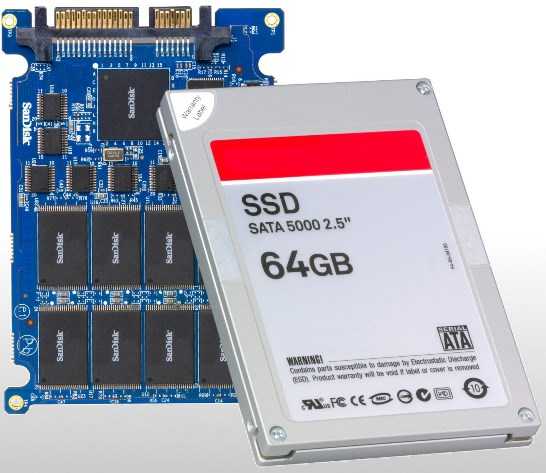
5 Different Types of SSDs with Connection Type Explained.
One of the innovations in storage for laptops and desktops has been the incorporation of SSD types. But not all types of solid state drives and SSD connection types are the same, nor can they be incorporated into any computer.
The solid-state drives present some evolutions in relation to Hard drives. A solid-state disk is faster, more durable, and in some cases smaller than traditional HD, but the variety of brands and types of SSDs makes a choice a little tricky.
Installing an SSD is an upgrade more than recommended for most users, especially on laptops, so much so that most of them already have an easy-access port for installing an SSD. But there are still some questions about these devices.
To make things easier, I present the types of SSD and indicate how to choose the SSD that will equip your computer. In this article, you will figure it out thoroughly: what types of SSD drives exist, types of SSD connectors and connection types, and an SSD form factor in an easy-to-understand manner.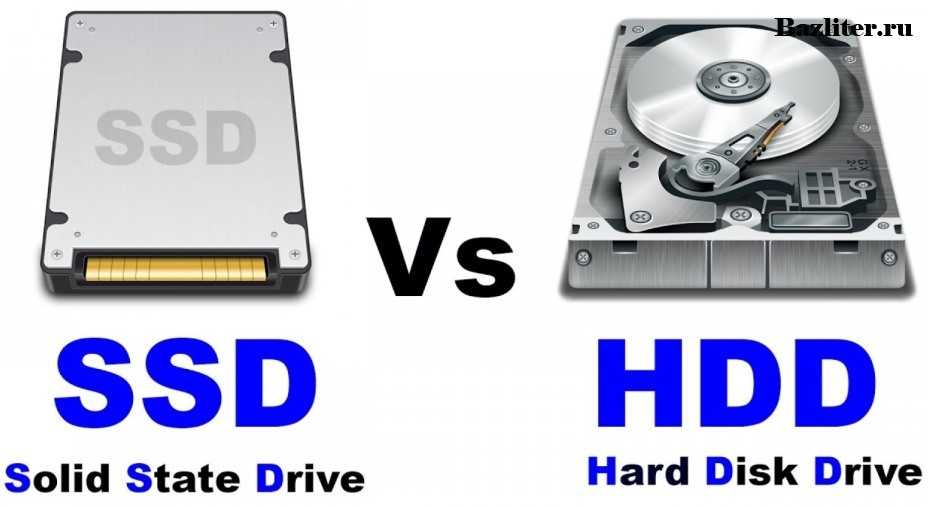
What is a Solid State Drive (SSD) in SImple Words?
How is an SSD Different from an HDD?
5 Types of SSDs (Solid State Drives) with Connectors
1. SATA SSD (SATA I, II, III)
2. M.2 SATA SSD
3. mSATA SSD
4. M.2 PCI-E SSD
5. M.2 NVMe SSD
Which SSD type is fastest?
Pros and Cons of SSD Drives over HDDs
How to choose SSD and their types?
FAQs
Conclusion
What is a Solid State Drive (SSD) in SImple Words?
A solid-state drive or SSD is a new, more modern device for storing information compared to mechanical (HDDs) counterparts. The term “Solid State” actually refers to using solid material to carry electrical signals between transistors instead of a passageway based on vacuum tubes, as was done in the past.
An SSD is a static device with no movable parts instead it is built with ICs (integrated circuits) to store the information inside an SSD.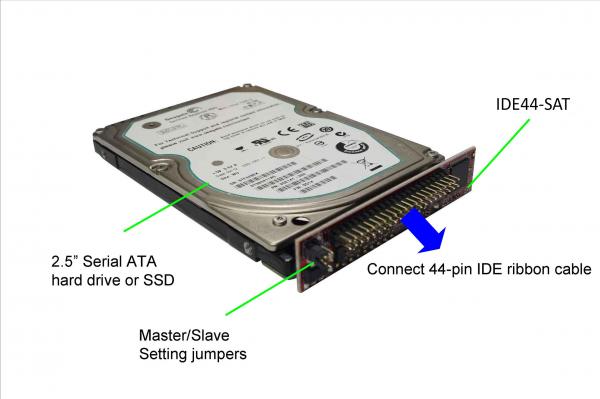 These storage devices are significantly faster than Hard Drives as your OS would boot it swiftly and load programs quicker.
These storage devices are significantly faster than Hard Drives as your OS would boot it swiftly and load programs quicker.
In technical terms, SSD is a read-only memory device of a computer based on non-volatile memory chips controlled by a unique controller, totally dispensing with mechanical systems for its operation. As a result, units of this type end up being more economical in energy consumption; after all, they do not need to power supply/motors or similar components.
Also, SSDs are different in shape, and their internal components, but it works the same functions as our Hard drives. But if SSD and HDD have the same function, what’s the big difference between them? Let me show you:
SSD Components
To have a clearer view of the device, for a start, let’s take a look at what components a solid-state drive consists of:
- Printed circuit board.
- Flash memory is responsible for storing data (a type of non-volatile memory NAND is widely used).

- The controller is a special microprocessor that connects the flash memory with the main computer bus, performs read/write operations (the operating speed depends on the firmware version).
- The cache is used for the temporary storage of data while working with flash memory.
- Connection interfaces a physical connector and the interface itself for the interaction of the SSD controller with the main system (SATA, PCI-Express).
How is an SSD Different from an HDD?
These are the metrics that differentiate an HDD from SSD:
- Read/Write Data
The HDD has a mechanical arm to read and write data, and its operation takes place magnetically by using magnetic systems (a technology similar to those used in CDs and DVDs).
In contrast, the SSD is built around a semiconductor integrated circuit, is responsible for storage, and has flash memory (a technology similar to those used in memory cards and USB sticks).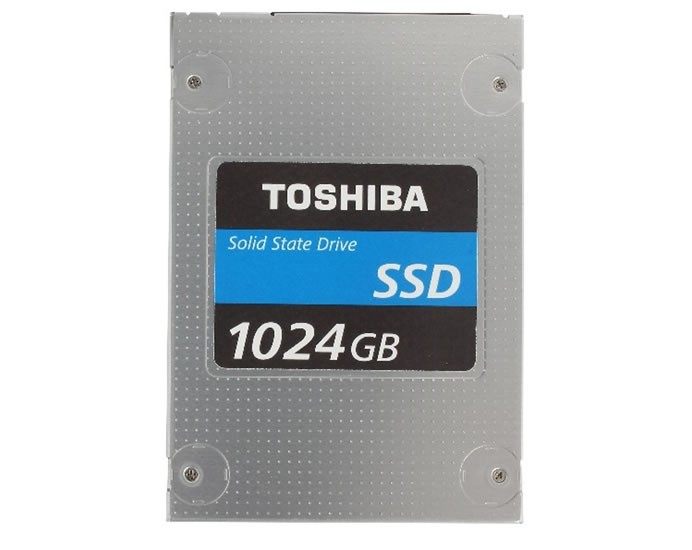 This makes SSDs essentially different from HDDs. This circuit also assists in caching, cleaning, storing, and restoring data.
This makes SSDs essentially different from HDDs. This circuit also assists in caching, cleaning, storing, and restoring data.
- Build:
The main difference from SSDs to HDDs is that the SSD has no moving parts, making it anti-vibrating and shock-proof, while conventional Hard Disk uses a magnetic disk that runs a certain amount of times per minute. This makes writing to these devices slower and more likely to damage as many fragile components wear out over time.
Because SSD works electrically, it can make reading and writing function faster and quieter, increasing the useful life of flash memory and managing the cache for reading and writing files.
- Heat Resistance:
SSDs are more heat-resistant prevents happening overheating of computer/CPU than HDDs because of the components on HDD that heat quickly.
- Processing Speed:
Since SSDs have no moving parts and in addition to making them more resistant than HDs, access to files and operations are done through electricity, representing a noteworthy decrease in the operating time of these functions compared to Hard Disk, (However there are some effective ways to speed up your hard drive such as defragmentation of hard disk).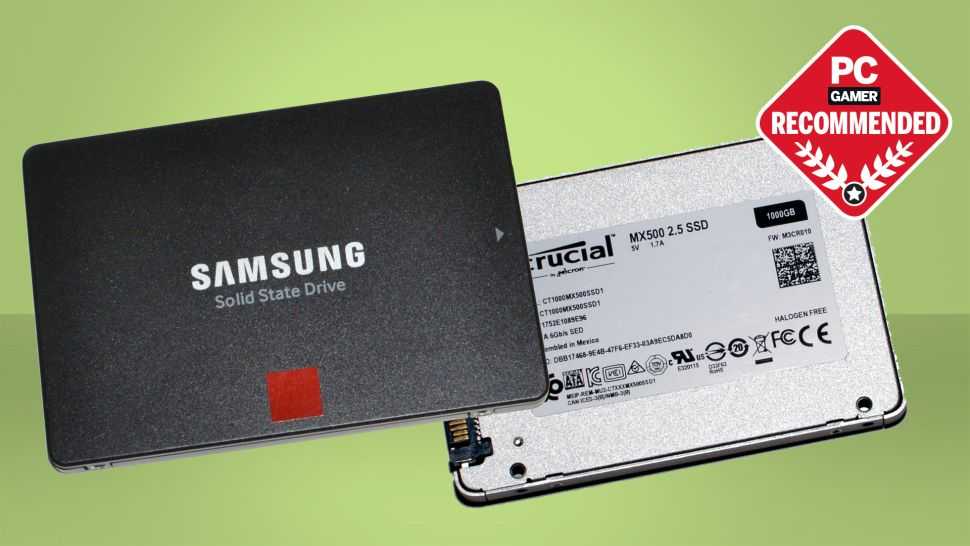
That’s why solid-state drives can speed up the file transfer from 10x to 20x faster than HDD. The processing speed for SSD can go up to 3500 Mbps, while HDDs only limited up to 160 Mbps.
- Weight:
SSDs are lightweight while HDDs are a bit heavier. Even the portable external SSDs drives for gaming light weight than external HDD.
5 Types of SSDs (Solid State Drives) with Connectors
Now that you know what SSD is and how it differs from a hard drive, it’s time to know the types and formats of Solid State Drives. Today, there are five most common SSD form factors used in the commercial segment.
Let’s see what interfaces, connectors, form factors, and functionalities exist for SSDs in today’s market.
1.
SATA SSD (SATA I, II, III)
SATA is the acronym for ‘Serial Advanced Technology Attachment’. Speaking of SSD types, SATA-type SSD is the most popular today and also one of the first SSD models to hit the market. It has a dimension of 2.5 inches, the same size as the conventional HD, and the same connector type.
It has a dimension of 2.5 inches, the same size as the conventional HD, and the same connector type.
As a connection interface, SSD uses SATA (Serial ATA) to communicate data with the system. If you own a SATA SSD, I can almost guarantee that it can be used with any desktop or laptop you have now, even if that computer is ten years old.
SATA-based SSDs are also more suitable for older computers that lack newer SSD connector types and only have SATA connections. A great way to speed up an older laptop or desktop is by replacing the old spinning hard drive with the new solid drive, increasing the computer’s ability to read/write data, possibly five times.
SATA is a model that has been constantly changed and has reached three main versions: SATA I, SATA II, and SATA III. The transfer rate of all three versions is given below:
- SATA 1.0: 5 Gb/s, 150 MB/s
- SATA 2.0: 3 Gb/s, 300 MB/s
- SATA 3.0: 6 Gb/s, 600 MB/s
For installing the SATA SSD (I, II, III) on your laptop or desktop, you need a 2. 5 Inches Drive Bay and a SATA Cable.
5 Inches Drive Bay and a SATA Cable.
2.
M.2 SATA SSD
The M.2 type of SSD is newer, and its format is lighter and smaller than the SATA type SSD. M.2 SSDs consist of a small printed circuit board with chips, somewhat reminiscent of a RAM bar shape.
Most M.2 drives are 22mm in width and 80mm in length with NAND chips on both sides. M.2 SATA drives are simply more convenient, as they are installed in a slot on the motherboard and do not require wires, but on the motherboard of the PC or laptop must have an appropriate M.2 slot.
Another advantage of the M.2 is its format flexibility, making this drive used on small laptops and desktops. These devices are very similar to small plaques, 22 mm wide but with different lengths: 22 mmx60 mm, 22 mmx80 mm, and 22 mmx110 mm. Thus, M.2 SSDs are specified as 2230, 2242, 2260, 2280, and 22110.
Here is a summary of the various most common M.2 formats and their respective sizes:
M.2 22110 : 110 x 22 mm
M.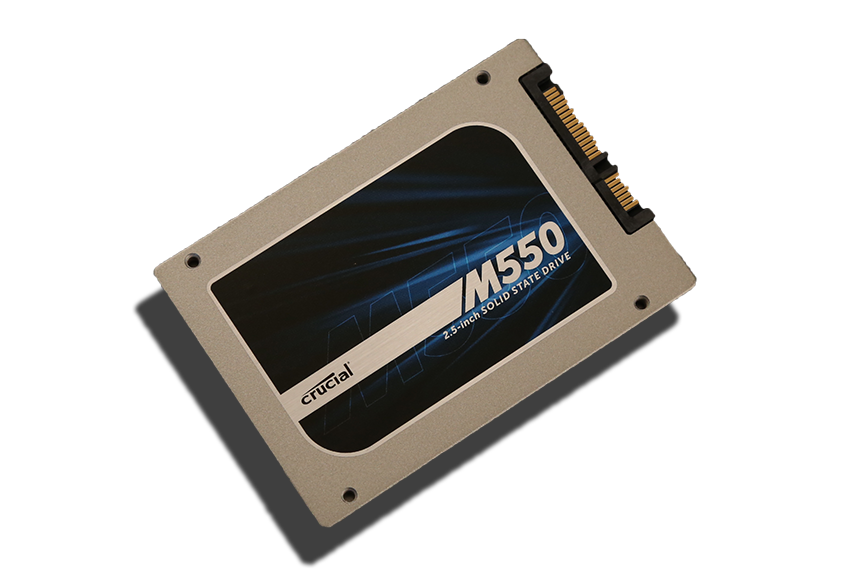 2 2280 : 80 x 22 mm (perhaps the most common)
2 2280 : 80 x 22 mm (perhaps the most common)
M.2 2260 : 60 x 22 mm
M.2 2242 : 42 x 22 mm
And the speed of the M.2 SATA SSD is the same as the regular SATA SSD has, i.e. up to 600 MB/s.
Important Note: The M.2 slot on some motherboards of Desktops and laptops can accept either the SATA bus or the PCI-E bus, i.e. such devices have either M.2 SATA slot or M.2 PCI-E slot. But on separate motherboards, M.2 slots can serve only one of them; either M.2 SATA mode or M.2 PCI-E mode. That’s is why you need to find out; is your computer is compatible or not for M.2 SATA SSDs.
And, accordingly, you can connect either M.2 SATA drives or M.2 PCI-E drives to such motherboards.
The connectivity of M.2 type SSDs is more complicated, but it can be done in 3 ways, depending on the type of socket on the motherboard.
The M.2 interface can have three key variations:
- Switch B
- Switch M
- Switch B&M
If you purchase an M.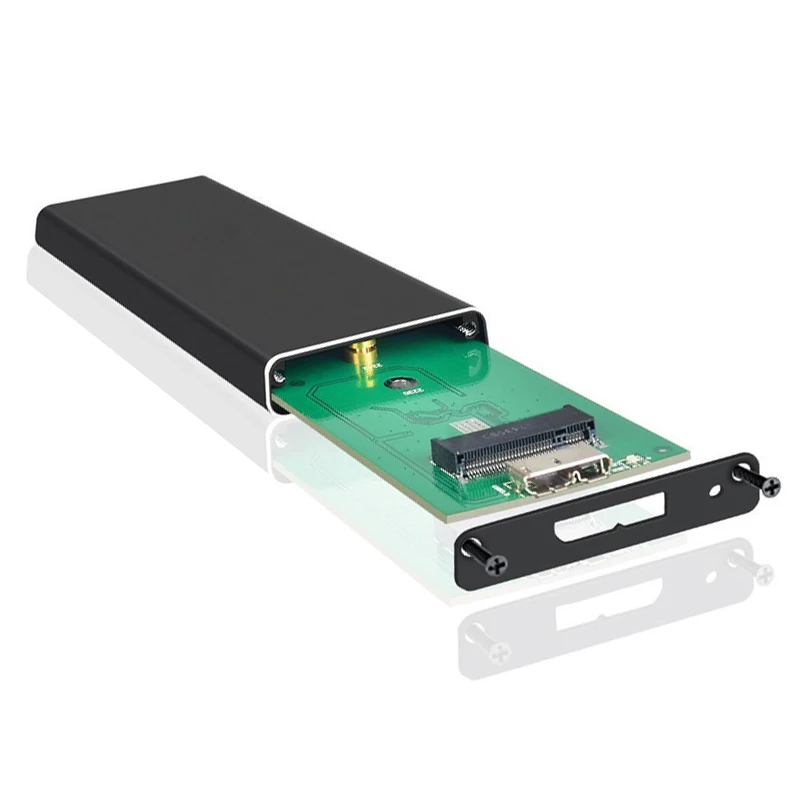 2 SATA (B&M) SSD and the motherboard supports M.2 PCI-Express (B&M), the SSD will not work! The M.2 slot keys on the motherboard and laptop must match the M.2 SATA slot as well as the size of the drive.
2 SATA (B&M) SSD and the motherboard supports M.2 PCI-Express (B&M), the SSD will not work! The M.2 slot keys on the motherboard and laptop must match the M.2 SATA slot as well as the size of the drive.
When buying a drive with an M.2 connection, it is essential to understand very accurately what kind of slot we have on the motherboard of a PC or laptop – what interface it is for, what key it has, and what sizes of drives it supports.
3.
mSATA SSD
An mSATA SSD is the mini version of SATA. It has a smaller form factor mainly used in ultra-compact computers, laptops, and mobile devices (tablets) with an mSATA slot, in which the installation of an extended size SATA SSD is impossible.
The latest mSATA has a capacity of up to 1TB and a read/write speed of up to 6gbps. mSATA has lower power consumption. The performance is not lesser than SATA SSD; however, the price is very economical.
Drives of this format represent a small card with soldered microcircuits installed in unique slots of some devices.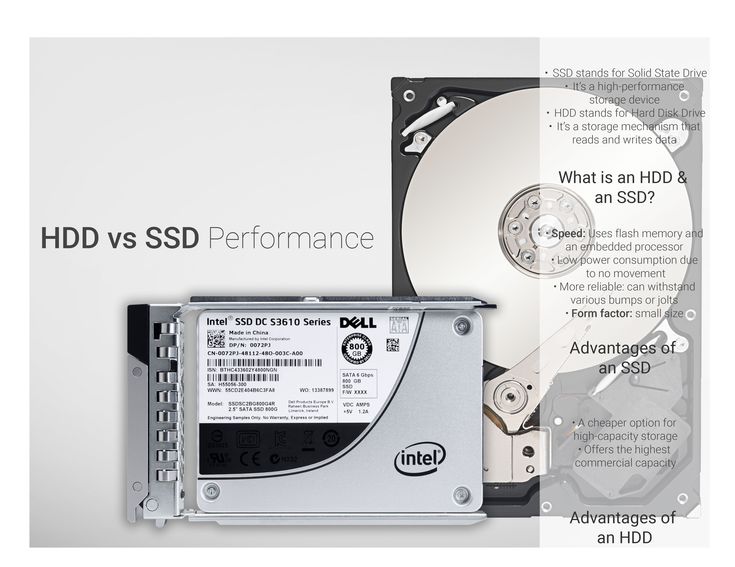 The main advantage of mSATA is its miniature; however, it is the same SATA SSD in all other aspects. Experts recommend purchasing such drives only for upgrading those devices in which the mSATA connector is provided.
The main advantage of mSATA is its miniature; however, it is the same SATA SSD in all other aspects. Experts recommend purchasing such drives only for upgrading those devices in which the mSATA connector is provided.
The mSATA connector on laptops is now virtually ousted from the market by the M.2 connector. Yet there are very few mSATA drives themselves on the market.
4.
M.2 PCI-E SSD
PCIe is one of the solid-state drives type connected to a computer system using a PCIe interface, which has become a new way to increase the speed of servers and storage devices.
PCIe-shaped SSDs fit into ports on your motherboard graphic card, the same way you install internal audio or network cards/components. And when you use NVMe SSD using PCIe SSD, you get the fastest computational speed. Its max read/write bandwidth is 2000mbps and can support up to 32gbps.
PCI Express SSDs are often costly, which is why they are usually only used in high-performance applications. You can also find other types of smaller SSDs that use the PCI Express (PCIe) connection, allowing a data transfer rate up to 4 times higher than the SATA 3 SSD.
You can also find other types of smaller SSDs that use the PCI Express (PCIe) connection, allowing a data transfer rate up to 4 times higher than the SATA 3 SSD.
For installing PCIe SSDs, you need PCIe M.2 slots on your motherboard. The M.2 slot keys on the motherboard must match the keys, as well as the size of the M.2 slot, and the M.2 drive must be the same size.
5.
M.2 NVMe SSD
NVMe is a type of SSD that stands for Non-Volatile Memory Express (NVMe) is five times faster than SATA SSDs due to its protocol for SSD that allows data exchange speeds up to 2600mbps. NVMe SSDs came later than SATA ones, and these slots were initially designed for graphics cards, so they are incredibly fast.
The objective here is to increase the unit’s performance. An M.2 NVMe SSD can have more data transfer speed (compared to a SATA SSD) due to the connection of this protocol with PCI Express, the latest and fastest technology.
They are more expensive than SATA and consume more power. High-scale businesses, intensive functioning computers, and large servers use NVMe. It also works with flash memory as well as reducing I/O Bridge and latency.
High-scale businesses, intensive functioning computers, and large servers use NVMe. It also works with flash memory as well as reducing I/O Bridge and latency.
Speeds on NVMe drives can reach an interface rate of 32 Gb/s with 3.9 GB/s throughputs. That can be very useful if you’re doing something that requires a lot of disk performance, like gaming or high-resolution video editing. It has a storage capacity of up to 4TB.
For installing PCIe NVMe, you need a motherboard most of the time with the form factor of PCIe, M.2, U.2.
As fast as it is, NVMs have some drawbacks:
- They are only available on desktop computers and are very expensive for starters, while they can be used as secondary drives to take advantage of their full potential.
- Most BIOS do not support booting from NVMe at this time. It’s still possible to get one that does, but it could mean replacing the entire mainboard.
If the latest and greatest speeds and efficiencies that come with an NVMe SSD are a must, then there are a couple of things to keep in mind.
- Make sure the computer has the M.2 connector type. Most consumer NVMe drives only support the M.2 “M” (5-pin) key, which is the M.2 physical edge connector. SATA-based SSDs use the “B” (6-pin) key, but there are some connectors that feature “B + M” that can accept both a SATA and NVMe drive.
- The computer must support compatibility and boot to an NVMe drive. Due to how new it is, many older computers and operating systems may not support booting or even recognize an NVMe drive.
- PCIe NVMe drives are the latest in the SSD consumer market, so the cutting edge is paid for at a high price.
- And finally, make sure an NVMe disk fits the use case. Performance increase will only be seen with large reads/writes to and from the drive or large amounts of small reads/writes. Computers will start up faster, files will transfer and search more quickly, programs will start faster, but it won’t make a Facebook page load faster.
Which SSD type is fastest?
NVMe PCIe SSDs are considered the fastest due to having more bandwidth while transferring data as well as writing/reading.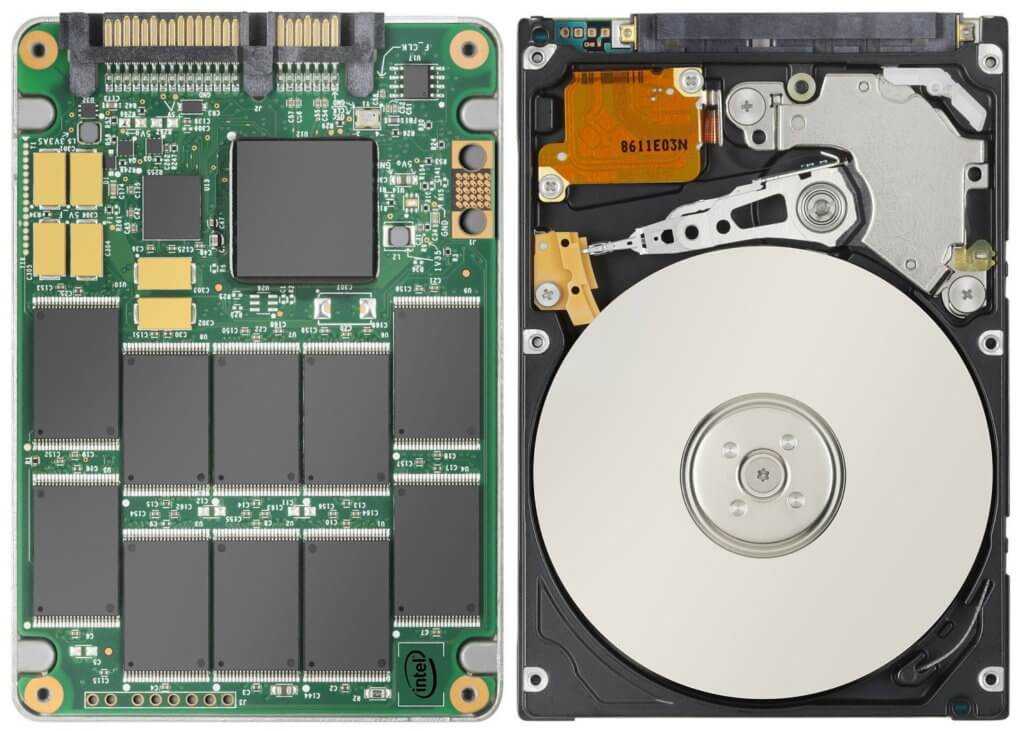 The speed and performance of NVMe PCIe are 3 to 4x times faster than SATA SSDs and 10 to 20x times more than SATA HDDs, which makes them the fastest SSD.
The speed and performance of NVMe PCIe are 3 to 4x times faster than SATA SSDs and 10 to 20x times more than SATA HDDs, which makes them the fastest SSD.
|
Disc Type |
Maximum data reading speed |
|
SATA HDD |
160 MB/s |
|
SATA 3 SSD |
600 MB/s |
|
NVMe PCIe SSD |
3500 MB/s |
You can step out of your traditional HDD and buy a better SSD for your PC if your primary interest is in faster-performing storage.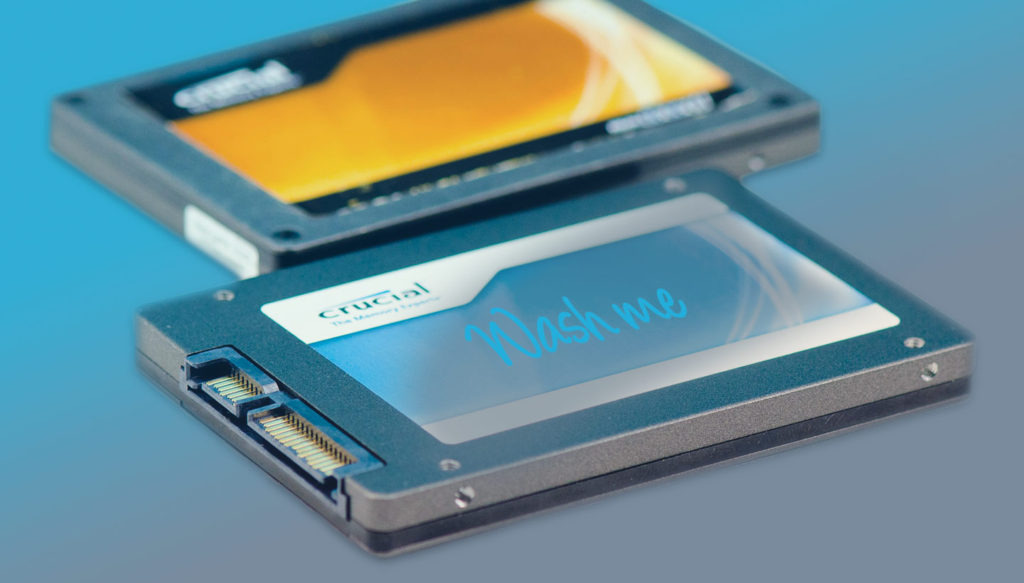
Pros and Cons of SSD Drives over HDDs
Here’s the comparison table between an SSD and an HDD:
|
Factor |
SSD (Solid State Drive) |
HHD (Hard Disk Drive) |
|
Faster |
Slower |
|
|
Sequential Read Speed, |
150-1350 |
120-150 |
|
Number of Reboot Cycles |
3000-10,000 |
Not Specified |
|
Power Consumption |
Lesser |
|
|
Movable Parts |
||
|
More resistant against physical shocks. |
||
|
Compact |
||
|
Storage Capacity |
Limited |
Extended |
|
Maximum Capacity |
500MB — 4TB |
Up to 6TB |
|
Somewhat Expensive |
Affordable |
|
|
Form Factor |
SATA 2. |
2.5″- 3.5″ |
Due to its fast read-write data and resistance to physical and magnetic damage, the decision to buy an SSD drive for a PC or laptop or even Chromebook if available will be an excellent option for upgrading your computer.
Of course, SSD drives are more expensive than hard drives, although prices decrease as their usage increases. Because of this — in many cases and due to technological limitations — the vast majority of SSD drives offered on the market have much lower storage capacity than hard drives in the same price range.
What is the difference between Expensive and Cheap SSD?
There could be striking differences in the quality of SSDs we buy from the market. There are some high-profile ones, while some of them are on a budget.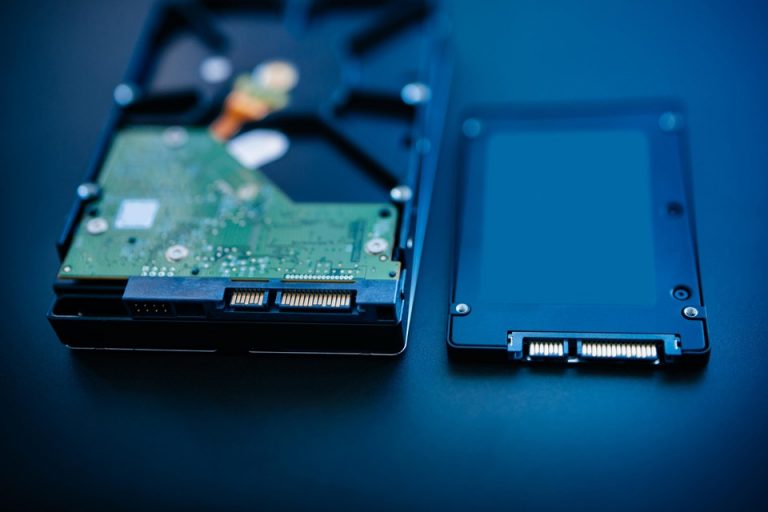 Here are some aspects we can look into to know the difference:
Here are some aspects we can look into to know the difference:
1. Age: A good SSD can cost you more, but they also protect you from wearing out soon. An expensive SSD could function for more than 20 years; meanwhile, a cheaper SSD would wear out soon after 5 to 10 years.
2. Faster Tasks: Tasks are done slightly faster on expensive SSDs. The reason is the faster loading of the SSDs, which gives them an advantage. However, if you have bought a cheaper SSD, it’s not as highly performative as expensive.
3. Cell-Level: The most commonly used SSD is the triple-level cell or TLC, and it has a higher chance of failure. It’s the cheapest option too. Others are Multi-Level Cell and Single Level Cell, both being a bit expensive with more extended warranties and faster processing.
How to choose SSD and their types?
Before picking your SSD types, there are certain things you need to keep in mind:
- Budget,
- Building preferences,
- Motherboard of your laptop/desktop should be compatible, as like your CPU is compatible with motherboard,
- Performance needs.
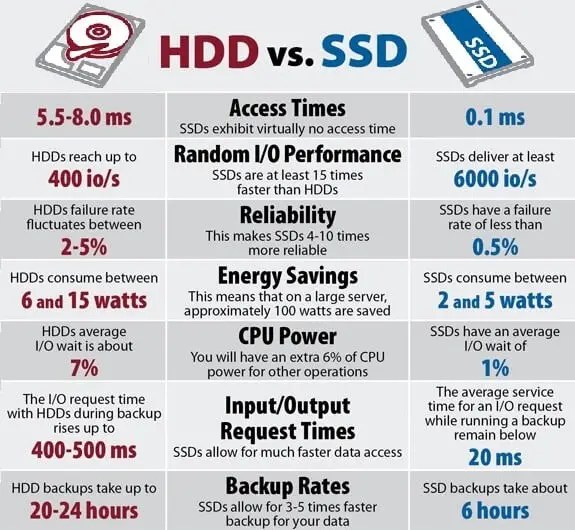
For Modern PC:
If you have a desktop or laptop with modern or slightly older infrastructure, your system can support both M.2 and 2.5-inch drives. You can opt for one or even a combo – M.2 for the boot drive and latter for additional storage. It would reduce cable clutter and add blazing fast speed to your PC.
For Older PC:
For older desktops, you’ll be more likely to choose a 2.5-inch drive with some M.2 drives. If your motherboard has PCIe 3.0 slots, then you can go for PCIe add-in adapter cards. It will allow you to accept M.2 drives too.
You may consider M.2 SATA SSD if you are updating your laptop and need fast storage of less than 2TB.
For an NVMe Drive:
The NVMe SSDs may work better for you if you’re building a high-end work center or gaming PC with no budget restrictions also if you want to create a server that will host a storage-intensive application.
Top Most Reasons to Buy an SSD
SSD drives have become famous for a reason, gradually replacing classic Hard Disk solutions. They have a wide range of qualities that ensure the speed and reliability of work. Therefore, the demand for them is constantly growing. Here are the reasons why you should buy SSDs:
They have a wide range of qualities that ensure the speed and reliability of work. Therefore, the demand for them is constantly growing. Here are the reasons why you should buy SSDs:
- The OS will require significantly lesser time for booting.
- Your file transfer, copy, and duplication speeds will be blazing fast – It is this indicator that makes the purchase of an SSD the most attractive.
- There will be no lagging while saving the documents.
- Users can quickly launch any app without waiting.
- Low noise level due to the absence of moving mechanical parts.
- It will allow you to run multiple programs at once without lagging.
- SSDs are reliable due to their susceptibility to damage.
- It provides an enhanced gaming experience.
- Small size and weight. Not the primary factor when buying, but in the case of choosing a laptop drive – a nice bonus.
- Low power consumption of computers. Another plus when choosing SSD for a laptop upgrade.
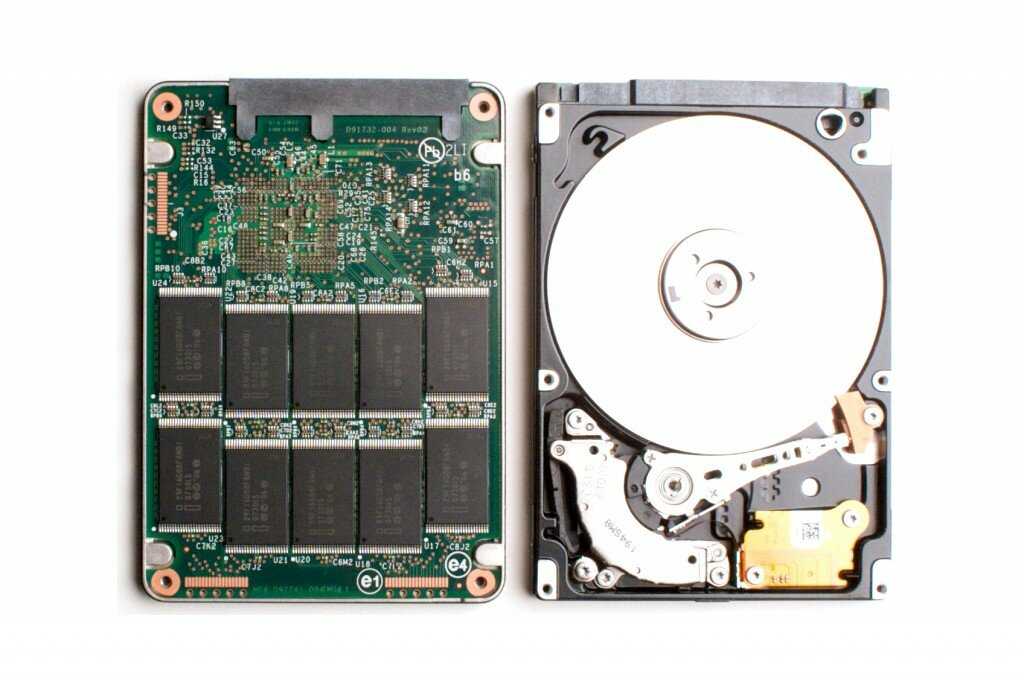 Even if the laptop is not new, battery life will increase significantly.
Even if the laptop is not new, battery life will increase significantly.
FAQs
Does it matter what type of SSD I get?
Yes, different types of SSD will have a different impact on your computer’s performance. It will affect the boot time, programs loading, and compatibility. SSDs have varying life spans, too, so their longevity will be different as well.
Can I use SSD and HDD at the same time?
Yes, one can use SSD and HDD together, and it comes with multiple benefits. You get faster loading speed, low energy consumption, and a backup option for your essential files. Use SSD for quick loading and HDD to keep large files.
What is SATA Express Connector?
The SATA Express connector is a hybrid connection, which combines the SATA standard with the possibility of plugging directly into the motherboard through PCIe ports. The exciting thing about this approach is that if a SATAe slot is not in use on the motherboard, it can connect up to two devices via “normal” SATA, thus achieve better performance—something similar to RAID. This technique makes the system faster and more secure. Theoretically, SATA Express can achieve data transfer rates of up to 16 Gb/s.
This technique makes the system faster and more secure. Theoretically, SATA Express can achieve data transfer rates of up to 16 Gb/s.
What is U.2 SDD and U.2 connector?
U.2 SSD comes with a U.2 interface (formerly known as SFF-8639) and is an interface standard defined by the SSD Form Factor Working Group (SWG). U.2 is developed for the enterprise market and supports PCI-E, SATA, SATA-E, and SAS interface standards, providing high data transfer rates. For an SSD with a U.2 connector to work, it must be provided by the computer’s motherboard.
Does SSD increase FPS?
Your SSD would not increase your FPS directly, but it will help prevent stuttering and hitching in heavier games. Storing the game on SSD storage will help quickly open and load the game and its maps.
Is a 256GB SSD better than a 1TB HDD?
If you are looking for more storage space on a budget, go for a 1TB HDD; otherwise, if you’re looking for fast computational speeds, a 256GB SSD would be perfect for you as it is still 4 to 10 times better than HDD.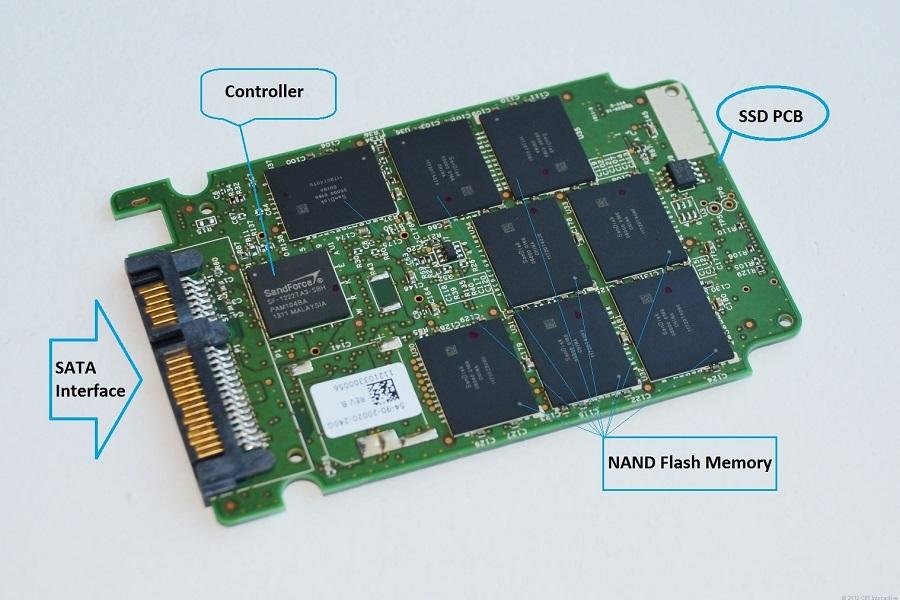
Can you install an SSD on any laptop?
Yes, an SSD can fit inside any laptop, but you should check the dimensions and specifications to install the SSD properly from your laptop manual. Most laptops support 2.5-inch SATA SSDs.
Conclusion
Many people wonder if SSD technology signals the end of the hard drive era. It is hard to say. HDs still have a decent cost-benefit ratio regarding storage capacity, not to mention that these devices have satisfactory average durability.
SSDs have a higher storage cost, and hard drives continue to be refined to gain more capacity and durability. The two categories are likely to coexist “peacefully” for a long time to come.
I hope you are now cleared about SSDs and types of solid-state drives. Also, remember that I described their speed in best-case scenarios, and it can fluctuate and feel less-speedier sometimes.
report this ad
Since it takes too much time and effort to deliver such an informative article, it will be grateful if you could share this article “5 Different Types of SSDs with Connection Type Explained” on social networks. Cheers!
Cheers!
Which One Is More Suitable for You?
As we all know, SSD is often used to store data, but do you know that there are different types of SSD? If you don’t know, then you had better read this post carefully. In this post, MiniTool has introduced 5 types of SSD to you. Besides, if you want to migrate your OS to SSD, MiniTool ShadowMaker is a good choice.
Introduction to SSD
What is SSD? It is short for solid-state drive, which is used to store data. Compared with the electromechanical drive, SSDs generally have a stronger resistance to physical shocks, run quietly, and have quicker access time and lower latency.
SSDs can use traditional HDD interfaces and form factors, or they can use newer interfaces and form factors to take advantage of the specific benefits of flash memory in SSDs. Traditional interfaces (such as SATA and SAS) and standard HDD form factors allow this type of SSD to be used as a drop-in replacement for HDD in computers and other devices.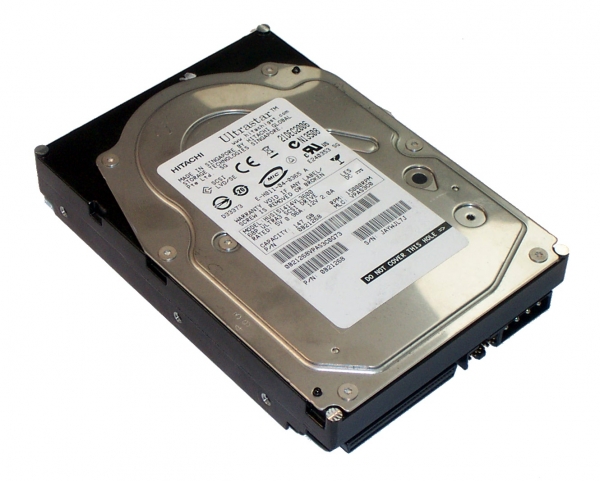
Related post: SSD VS HDD: What’s Difference? Which One Should You Use in PC?
SSD consists of a control unit, a storage unit (NAND Flash chip or DRAM chip), an optional cache (or buffer) unit, and an interface.
To learn more information about SSD, read this post — Everything You Need to Know About Solid-state drive (SSD) – Guide.
Type of SSD
- SATA SSD
- PCIe SSD
- M.2 SSD
- U.2 SSD
- NVMe SSD
Type of SSD
Normally, we can classify SSDs based on two factors: memory chip and interface. In this post, we will introduce several different types of SSD drives based on the interface.
SATA SSD
Speaking of types of SSD, SATA SSD is the most common type. As a type of connection interface, SATA (Serial ATA) is used by SSD to communicate data with the system. If you own a SATA SSD, you can almost guarantee that it can be used with any desktop or laptop computer you own now — even if that computer is ten years old.
SATA itself has a speed grade, and you will see SATA 2 and SATA 3 in any SSD considered for use, called “SATA II”/“SATA 3Gbps” or “SATA III”/“SATA 6Gbps” respectively. These indicate the maximum possible data transfer rate of the drive, provided that the drive is installed in a PC with a SATA interface that supports the same standard.
Nowadays, SATA 3.0 is the most versatile form of SSD, with a theoretical transfer speed of 6Gb/s (750MB/s). But since some physical overhead will occur when encoding the data to be transferred, its actual transfer speed is 4.8Gb/s (600MB/s).
Related post: What Is SATA Hard Drive? SATA Hard Drive Recovery
PCIe SSD
PCIe SSD is one of the types of SSD hard drives. PCIe SSD refers to a solid-state drive connected to a computer system using a PCIe interface. PCIe SSD has become a new way to increase the speed of solid-state drives (SSD) to servers and storage devices.
PCI Express, formally abbreviated as PCIe or PCI-e, is short for Peripheral Component Interconnect Express. As a high-speed computer expansion bus standard, PCIe can replace the older PCI, PCI-X, and AGP bus standards. In addition, PCIe is a common motherboard interface for computer graphics cards, hard drive, SSD, Wi-Fi, and Ethernet hardware connection.
As a high-speed computer expansion bus standard, PCIe can replace the older PCI, PCI-X, and AGP bus standards. In addition, PCIe is a common motherboard interface for computer graphics cards, hard drive, SSD, Wi-Fi, and Ethernet hardware connection.
To learn more detailed information, read this post — What Is PCIe SSD & How to Upgrade to PCIe SSD (2020 Update).
M.2 SSD
M.2 SSD also belongs to one of the types of SSD. It was formerly known as NGFF (Next Generation Form Factor). M.2 SSDs are small circuit boards containing flash memory and controller chips, rather than slab-shaped devices containing these chips.
The shape of M.2 SSD is similar to that of RAM, but it is much smaller and has become a standard configuration in ultra-thin notebook computers, but you will also find them on many desktop motherboards. Many high-end motherboards even have two or more M.2 slots, so you can run the M.2 SSD in RAID.
The size of M.2 SSD is various, usually 80mm, 60mm, or 42mm long, 22mm wide, with NAND chips on one or both sides.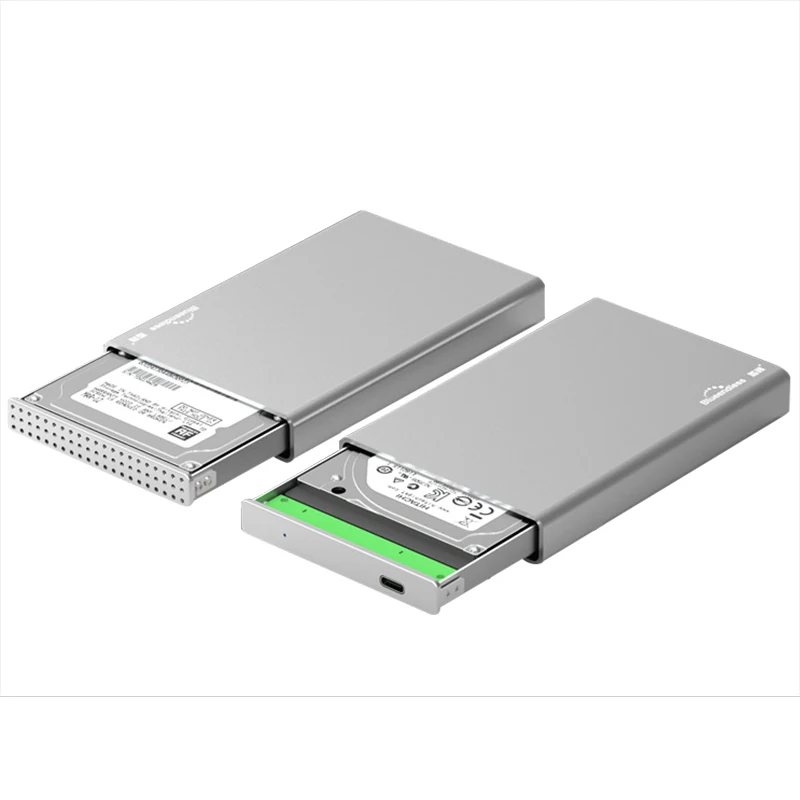 You can distinguish it by the four or five digits in the name. The first two digits represent the width and the remaining two digits represent the length.
You can distinguish it by the four or five digits in the name. The first two digits represent the width and the remaining two digits represent the length.
The most common size is marked as M.2 Type-2280. Although laptops are usually only available in one size, many desktop motherboards have fixing points that can be used for longer or shorter drives.
Related post: 5 Best 1TB M.2 SSDs of 2020: Which One Should You Choose
U.2 SSD
In terms of SSD types, U.2 SSD needs to be mentioned. A U.2 SSD is an SSD with a U.2 interface. U.2 (previously known as SFF-8639) is an interface standard defined by the SSD Form Factor Working Group (SFFWG). U.2 is developed for the enterprise market and aims to be compatible with PCI-E, SATA, SATA-E, and SAS interface standards.
U.2 SSDs look like traditional SATA hard drives. but they utilize a different connector and send data via the speedy PCIe interface, and they’re typically thicker than 2.5-inch hard drives and SSDs.
Related post: What Is U. 2 SSD? How about U.2 SSD vs. M.2 SSD? An Easy Guide
2 SSD? How about U.2 SSD vs. M.2 SSD? An Easy Guide
NVMe SSD
Different types of SSD possess different interfaces. NVMe SSD is an SSD with an NVMe interface. NVM Express (NVMe) is short for Non-Volatile Memory Host Controller Interface Specification (NVMHCIS). It is an open logical device interface specification for accessing non-volatile storage media connected via PCI Express (PCIe) bus.
NVM Express enables host hardware and software to take full advantage of the parallelism possible in modern SSDs. As a result, compared to the previous logical device interface, NVM Express reduces I/O overhead and brings various performance improvements, including multiple long command queues, and reduced latency.
To learn more detailed information, read this post — What Is NVMe SSD? Precautions Before Getting NVMe SSD.
This post has introduced 5 different types of SSD: SATA SSD, PCIe SSD, M.2 SSD, U.2 SSD and NVMe SSD. If you think it is useful, share it in Twitter to let more people know.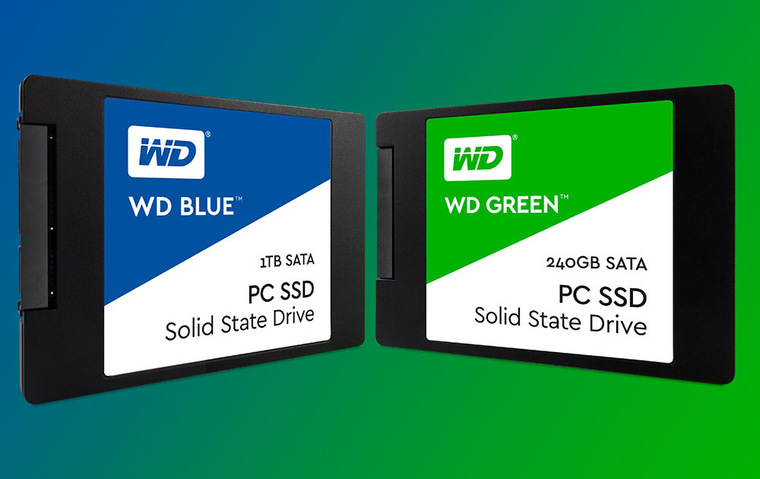 Click to Tweet
Click to Tweet
How to Migrate OS to SSD?
The above text has listed some information about several types of SSD, and if you have installed Windows on an HDD and want to get better performance, then you can try to migrate your operating system to SSD. But which tool is suitable for you? It is recommended to use MiniTool ShadowMaker.
At first glance, you may find that MiniTool ShadowMaker is a powerful Windows backup tool, which allows you to back up files, folders, partitions, disks, and even the OS. Then you can find that it is a hard drive cloning program because it provides you a professional feature – Clone Disk.
What’s more, MiniTool ShadowMaker provides you a Trial Edition that allows you to use all features for free within 30 days. So why don’t you download this tool and have a try?
Free Download
Now follow the instructions below to migrate your operating system to SSD using MiniTool ShadowMaker.
Step 1: Insert your SSD to your computer. Install and launch MiniTool ShadowMaker, then click Keep Trial.
Install and launch MiniTool ShadowMaker, then click Keep Trial.
Step 2: Choose Connect under This Computer to get into the main interface.
Step 3: Go to the Tools page and then click the Clone Disk feature.
Step 4: A new window pops out, click Source to choose the source disk. Here, you need to choose the original system disk as the clone source and click Finish to continue.
Step 5: Click Destination to choose a target disk. Here, you need to choose the inserted SSD as the target disk. Then click Finish to continue.
Step 6: After you have confirmed the source disk and the target disk, click OK to continue. Then you will receive a warning message that tells you all data on the target disk will be destroyed during the disk cloning process. Then click Yes to continue.
Tip: You’d better back up all important data on the target disk. Maybe you are interested in this post — How to Backup Files on Windows 10? Try These Top 4 Ways.
Step 7: MiniTool ShadowMaker will begin to clone your system to SSD, and you should never interrupt the disk clone process until it is finished.
Step 8: When the disk clone process is completed, you will receive a message which tells you that the source disk and the target disk have the same signature. If both of them are connected to the computer, either of them will be marked as offline. So, you need to remove the original system disk from your computer.
After all the steps have been done, you have successfully migrated your OS to SSD without reinstalling the operating system and losing your data. And you can get better performance from SSD, such as boot the Windows OS fast, play games smoothly, and so on.
Also see: How to Upgrade Laptop from HDD to SSD Without Reinstalling OS
MiniTool ShadowMaker is very useful when migrating the system to SSD because it doesn’t need to reinstall the OS. Click to Tweet
Click to Tweet
Final Words
After reading this post, you should have some basic knowledge about 5 different types of SSD – SATA SSD, PCIe SSD, M.2 SSD, U.2 SSD, and NVMe SSD. What’s more, if you want to get better performance, then you can use MiniTool ShadowMaker to migrate your OS to SSD.
If you have any confusion about the types of SSD or have problems using MiniTool ShadowMaker, then leave a comment below or send an email to [email protected].
Types of SSD FAQ
Are all SSD drives the same?
Not all SSD drives are the same because they have different storage capacity, speeds, form factors memory technology, as well as connectors. You may be interested in this post — SSHD VS SSD: What Are the Differences and Which One Is Better?
Is 256GB SSD better than 1TB HDD?
It is well-known that the SSD is better than HDD. But when it comes to 256GB SSD vs 1TB HDD, then it depends on your demands and budget. To learn more detailed information, it is recommended to read this post — 256GB SSD vs 1TB HDD: Is a 256GB SSD Better Than a 1TB Hard Drive.
Can you install SSD on any laptop?
Of course, you can. As we all know, adding an SSD can improve a laptop’s performance, so read this post — How to Install SSD in PC? A Detailed Guide Is Here for You! to get detailed instructions on how to install SSD.
Can I use SSD and HDD at the same time?
You can use both SSD and HDD at the same time to improve the computer’s performance. You may want to know how to do it, so you can read this post — Can I Use SSD and HDD at the Same Time – Here’s Your Full Guide.
What type of SSD should you buy?
Feature
Once you get past the alphabet soup, making a decision is pretty simple.
By Alaina Yee
Senior Editor, PCWorld
willis_lai@idg. com
com
Solid-state drives have clear advantages over old-school hard-disk drives: SSDs are faster, quieter, and consume less power. Problem is, they also come with an array of acronyms listed in their specs, which can make it hard to figure out what you need.
Cutting through the clutter is really quite simple—you just pick a form factor and a speed. Our guide explains how.
Need the super fast version? Read our summary below.
SSD form factors: M.2 drives vs 2.5-inch drives
We’ll start with form factor. SSDs come in multiple shapes and sizes, but the two most common types are M.2 drives and 2.5-inch drives. Each type has its advantages: gumstick-shaped M.2 drives connect directly to your motherboard (thus reducing cable clutter in desktop PCs), and some types are faster than 2.5-inch drives. For their part, rectangular 2.5-inch drives, which slot into a PC like a conventional storage drive, are often cheaper.
Other less common form factors include PCIe add-in cards and U.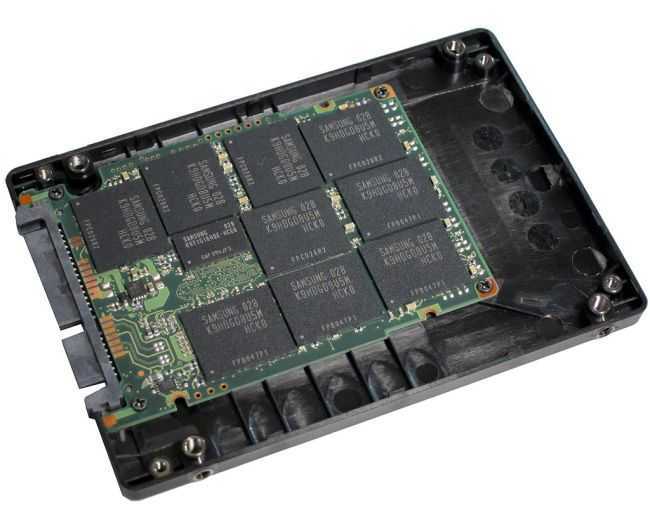 2 drives, both of which are used in desktop PCs. PCIe add-in cards look similar to a sound card or a graphics card, and connect to your motherboard using the same PCIe slots. U.2 SSDs resemble 2.5-inch drives but only work if a vendor has added a U.2 connector to a motherboard (or you purchase an adapter to use it with an M.2 slot). You may also encounter mSATA drives in older laptops or mini-PCs, but these have been superseded by M.2 drives in modern hardware. mSATA and M.2 SSDs are not interchangeable.
2 drives, both of which are used in desktop PCs. PCIe add-in cards look similar to a sound card or a graphics card, and connect to your motherboard using the same PCIe slots. U.2 SSDs resemble 2.5-inch drives but only work if a vendor has added a U.2 connector to a motherboard (or you purchase an adapter to use it with an M.2 slot). You may also encounter mSATA drives in older laptops or mini-PCs, but these have been superseded by M.2 drives in modern hardware. mSATA and M.2 SSDs are not interchangeable.
So how do you pick a type? That depends on what your desktop or laptop can support, as well as your performance needs, budget size, and building preferences. Most people can just focus on choosing between the 2.5-inch and M.2 form factors, as PCIe add-in cards and U.2 are more niche. mSATA only comes into play when replacing an existing drive or adding one to older compatible hardware.
Rob Schulz / IDG
Of these form factor types, 2.5-inch and M.2 drives are the far most common.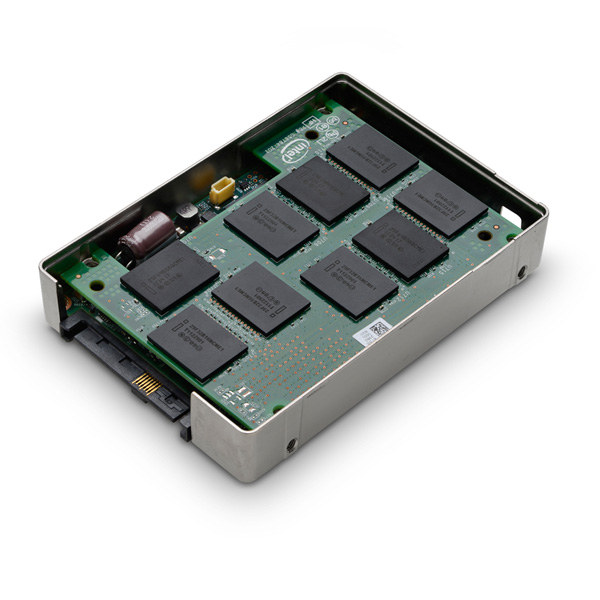 The others only come into consideration if 2.5-inch or M.2 drives won’t work for your situation (which isn’t a common occurrence).
The others only come into consideration if 2.5-inch or M.2 drives won’t work for your situation (which isn’t a common occurrence).
Best budget 2.5-inch drive
addlink SSD S10 512GB 2.5″ SATA SSD
For desktop systems with modern hardware or slightly older high-end hardware, you should be able to use both M.2 and 2.5-inch drives. Many people don’t even choose between the two, and instead go with a combination—usually M.2 for your boot drive and 2.5-inch drives for additional storage. This arrangement helps reduce cable management headaches and general cable clutter, while also allowing builders to take advantage of both fast and affordable, higher-capacity SSDs in a single PC.
For older desktop systems, you’ll likely be stuck with just 2.5-inch drives as your option. If you really want the faster speeds you can get with some M.2 drives, you can look at PCIe add-in adapter cards if your motherboard has PCIe 3.0 slots. These expansion cards accept M.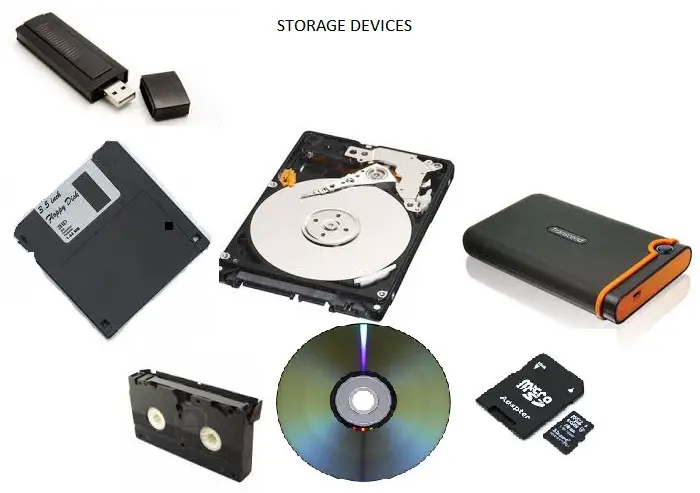 2 drives, thus allowing you to use one over a PCIe slot.
2 drives, thus allowing you to use one over a PCIe slot.
(Need a guide for how to install an M.2 or 2.5-inch SSD? Our step-by-step instructions explain how it’s done.)
As for laptops, if you’re allowed to choose between SSD form factors while configuring a new notebook, select whichever option offers the best value and performance relative to the cost. But with most laptops, you won’t get to decide.
MHQJRH / Amazon
Have an older motherboard that lacks M.2 slots? If you have an open PCIe 3.0 x4, x8, or x16 slot on your motherboard, you can use an M.2 NVMe to PCI 3.0 adapter card, like the one pictured here.
For upgrades on older laptops, you also may not get a choice. The laptop’s configuration may limit you to only one form factor. To figure out if your model has an M.2 slot, a 2.5-inch drive bay, or both, you’ll need to find its service manual online or do research on forums and Reddit. You can also try contacting customer support. Be sure to buy a drive compatible with your laptop—pay attention to details like interface type (which is covered in the next section) and the Z-height of your original 2. 5-inch drive. Also check reviews to find out the power consumption of any specific SSD you’re considering, as it will have an impact on your battery life.
5-inch drive. Also check reviews to find out the power consumption of any specific SSD you’re considering, as it will have an impact on your battery life.
After you’ve selected one for your system, you can follow our step-by-step instructions for installing an SSD in a laptop to make the upgrade simple and fast.
SSD speed: SATA vs NVMe
Best 2.5-inch SATA SSD
SK hynix Gold S31 500GB 3D NAND 2.5 inch SATA III Internal SSD
Now let’s move on to speed. When an SSD is referred to as being a SATA or NVMe drive, you’re essentially hearing shorthand for the speed range you can expect from it. Not all SSDs use the same digital interface to transfer data. Some still use Serial ATA (SATA) while newer models use the Non-Volatile Memory Express (NVMe) protocol over PCI Express (PCIe).
SATA is older and as you’d expect, SATA drives are slower than the NVMe variety. The interface limits how fast data can be transferred to and from an SSD. Still, SATA SSDs are a huge improvement over a hard-disk drive (HDD)—their average read and write speeds fall in the range of 500MB per second, which is between three and six times faster than a HDD. Combine that with affordable prices, and you have a great option for cost-conscious PC builds and upgrades. We now regularly recommend SATA SSDs to everyone buying a new PC, and especially so when doing an upgrade on an old PC. The performance boost over HDDs is so substantial—even in mundane situations like loading a website—that most people will feel like they’re using a completely different computer.
Still, SATA SSDs are a huge improvement over a hard-disk drive (HDD)—their average read and write speeds fall in the range of 500MB per second, which is between three and six times faster than a HDD. Combine that with affordable prices, and you have a great option for cost-conscious PC builds and upgrades. We now regularly recommend SATA SSDs to everyone buying a new PC, and especially so when doing an upgrade on an old PC. The performance boost over HDDs is so substantial—even in mundane situations like loading a website—that most people will feel like they’re using a completely different computer.
Gordon Mah Ung
HDDs still reign supreme if you need gobs of storage at an affordable price, but when it comes to speed, SATA SSDs smoke them.
Best M.2 PCIe Gen 3 SSD
SK Hynix Gold P31 M.2 NVMe SSD (1TB)
NVMe has none of SATA’s limitations, and it shows. NVMe SSDs are screaming fast. Right now, they run between 5 to 6 times faster than SATA drives, and a newer variety currently tops out at around 10 times as fast.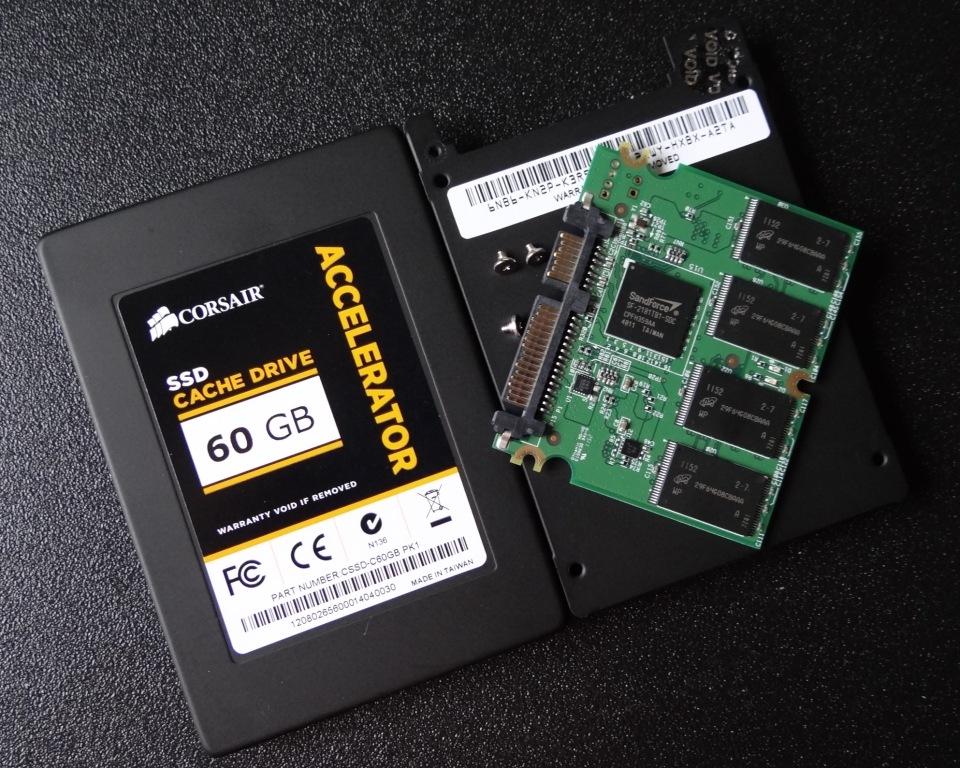 As manufacturers refine their designs and release more models of that quicker variety, the speed of NVMe drives will continue to climb the charts.
As manufacturers refine their designs and release more models of that quicker variety, the speed of NVMe drives will continue to climb the charts.
Interested in how NVMe SSDs work? Our guide breaks down the details for you.
The terms to watch for when digging through NVMe SSD specs are PCIe Gen 3, which is sometimes written as PCIe 3.0, and PCIe Gen 4, which is sometimes written as PCIe 4.0. You’ll also want to note if they’re listed as being “x2” or “x4” (pronounced “by 2” or “by 4”), which indicates the number of PCIe lanes the drives can use. The more lanes, the more data the drive can transfer at one time. Current PCIe Gen3 x4 SSDs average between 2,500 and 3,200MB per second for reads and writes, while PCIe Gen4 x4 drives average 5,000 MB per second.
So how do you choose? Well, similar to form factor, you don’t always get to make that decision: 2.5-inch SSDs are all SATA drives, and while M.2 SSDs come in both the SATA and NVMe varieties, what your motherboard supports dictates what you should purchase. M.2 slots can support only SATA, only NVMe, or both. In desktop PC motherboards, you’ll see at least one slot on the board that supports both, and sometimes a second one that either supports both or just SATA. In laptops, it can be any one of those three scenarios, so look up your specific model’s specs.
M.2 slots can support only SATA, only NVMe, or both. In desktop PC motherboards, you’ll see at least one slot on the board that supports both, and sometimes a second one that either supports both or just SATA. In laptops, it can be any one of those three scenarios, so look up your specific model’s specs.
IDG
Some laptops are more upgrade friendly than others. This one features two M.2 slots with support for NVMe. You can usually figure out your laptop’s specs by consulting the service guide or looking up YouTube disassembly videos.
Best M.2 PCIe Gen 4 SSD
Samsung 980 Pro PCIe 4 NVMe SSD (1TB)
If you do get a say in the interface type, consider SATA drives as sufficiently quick for everyday tasks and even gaming, and then NVMe as great for high-performing PCs where it’s important to save time on large file transfers. Overall, your budget and the age of your PC will shape your decision.
As a reminder: Even if you’re restricted to only SATA or only NVMe drives, individual SSDs vary in performance, which can affect your interactions with your PC.
So be sure to compare specs and read reviews.
NAND types and DRAMless drives
Interface types serve as the primary indicator of speed in an SSD, but the specific flavor of the NAND (flash memory) used in SSDs and the inclusion of a dynamic RAM (DRAM) cache influence it as well.
But a deep analysis of these aspects isn’t necessary for most people—what matters more is how the drive performs when doing different types of file transfers, and you’ll see those results in individual reviews. (You can check out all of PCWorld’s SSD reviews in our roundup of the best models.)
Because while single-level cell (SLC), multi-level cell (MLC), triple-level cell (TLC), and quad-level cell (QLC) NAND each have their pros and cons, what sits on store shelves is more materially important. These days, most consumer SSDs come in TLC and QLC flavors, as manufacturers push costs down but drive capacities higher.
Samsung
Samsung’s top of the line 980 Pro uses TLC NAND—a change from the MLC NAND in the 970 Pro.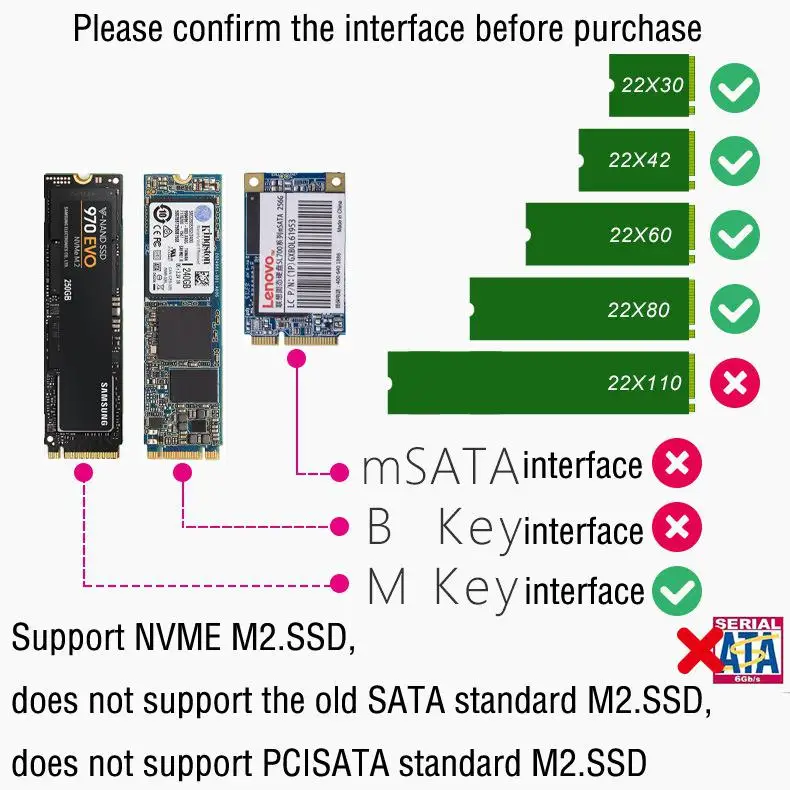 These days, it’s gotten pretty hard to find a consumer SSD with MLC NAND.
These days, it’s gotten pretty hard to find a consumer SSD with MLC NAND.
Similarly, while DRAMless drives do trail in some benchmarks relative to comparable SSDs with DRAM caches (like random writes), how they perform relative to SSDs with slower-performing interfaces still matters. A DRAMless NVMe SSD is still faster than SATA SSD, and a DRAMless SATA SSD is still faster than a HDD. Obviously, skip a DRAMless SSD that fails to meet this expectation, or one that’s priced the same as a model with a DRAM cache. Also skip if you just need even performance across the board. But don’t feel like you have to stretch your budget to avoid all DRAMless SSDs.
Summary
If your brain’s still digesting all that information with no clear indication of how to proceed, don’t worry. Just answer these two questions to figure out what type of SSD to buy:
- What fits into my PC or laptop? (2.5-inch SSD, M.2 SSD, or both?)
- What interface types does my PC or laptop support? (SATA, NVMe, or both?)
You can answer these questions most easily by looking up the specs of your motherboard for a desktop PC, or diving into your laptop’s service guide, manufacturer forums, and/or Reddit.
For laptops, also look up the maximum Z-height for a 2.5-inch drive (as applicable) to make sure it’ll fit, and find out the power consumption of any SSD you’re considering. The latter can have an impact on your battery life.
As for picking the right SSD, see our roundup of the best SSDs for links to all our SSD reviews. (This extremely helpful Reddit post features a handy visual guide that groups SSD models by general performance, which you can use to narrow the focus of your research.) Aim for even performance, but also evaluate your needs. No need to pay for top-shelf quality when you’ll be happy with a mid-tier selection—or even budget option. Ignore the internet comments that insist otherwise.
Finally, once you have your SSD in hand, be sure to read up on the best ways to manage it, as they’re a little different than HDDs. (Don’t worry, you won’t have to do much work at all!) Also, if you’ve picked an M.2 SSD, you can speed up the installation process by following our handy step-by-step instructions.
Author: Alaina Yee, Senior Editor
Alaina Yee is PCWorld’s resident bargain hunter—when she’s not covering PC building, computer components, mini-PCs, and more, she’s scouring for the best tech deals. Previously her work has appeared in PC Gamer, IGN, Maximum PC, and Official Xbox Magazine. You can find her on Twitter at @morphingball.
Types of SSD drives — how to choose
The IES Spetspostavka company offers customers from Moscow, St. Petersburg and with delivery to other regions of Russia different types of SSD drives with guarantees and certificates of conformity. Among the range of products from the catalog, you can choose a disk for a computer or laptop for the upcoming operating conditions and within the allocated purchase budget.
There are significant differences in the performance of SSD drives of different “grades” depending on the ambient temperature, power conditions, load, etc.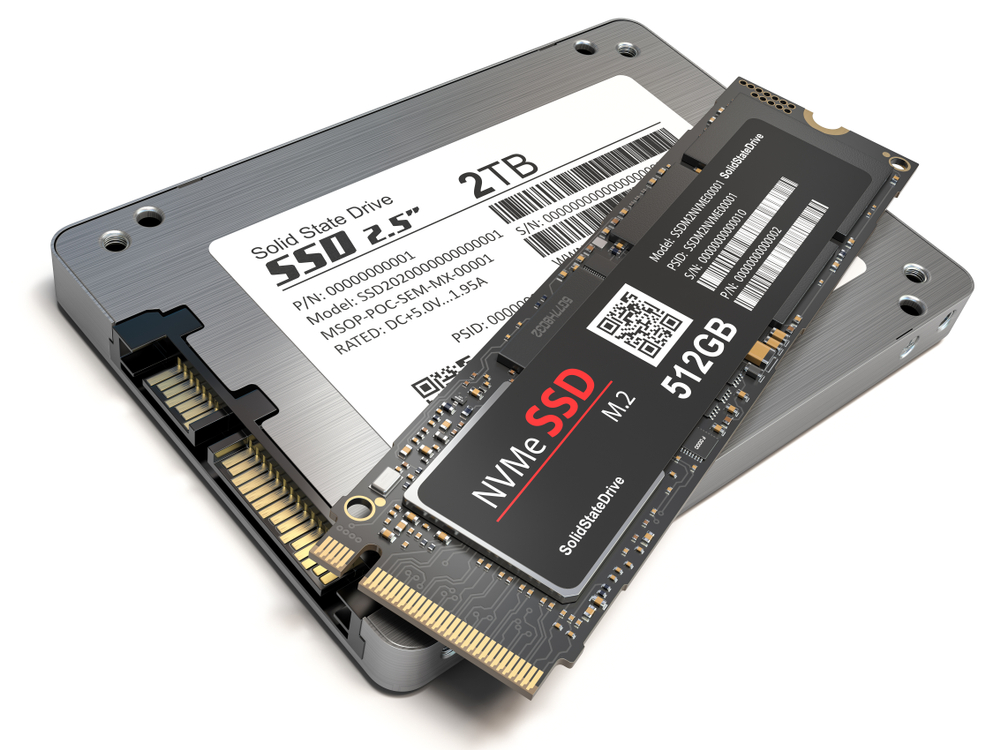 For example, an industrial «class» SSD can have 300 times (300 times, not 300%) more write cycles per physical data block compared to a commercial one. Therefore, a designer must carefully choose which «class» of flash drive is appropriate for their application if they want a system that will last the life of the product. How to make a choice? Let’s figure it out.
For example, an industrial «class» SSD can have 300 times (300 times, not 300%) more write cycles per physical data block compared to a commercial one. Therefore, a designer must carefully choose which «class» of flash drive is appropriate for their application if they want a system that will last the life of the product. How to make a choice? Let’s figure it out.
The most common mistake some engineers make is believing that all SSDs are equally reliable and therefore only consider cost, performance and capacity. An SSD with a shorter lifespan and high performance can work great in a lab. But as soon as the SSD is in the field, failures begin, increasing due to prolonged operation at extreme temperatures, a significant increase in the number of read / write operations and other factors.
A little about SSD drives
Solid state drives (SSD drives) are a technology that has become the basis of a new standard for the speed and responsiveness of personal computers and laptops. Their speed, quiet operation, small size contributed to mass distribution. To choose the right model, you need to navigate in many nuances:
Their speed, quiet operation, small size contributed to mass distribution. To choose the right model, you need to navigate in many nuances:
- Volume . The larger the volume of the disk, the higher its price will be. Therefore, it is necessary to find a balance between cost and capacity. If a disk is selected to accommodate the operating system, then a 250-500 GB model will be enough. In this case, the OS itself will take 100-150 GB, and the rest of the space will go to files in downloads, etc. If you have to work with large volumes of files and need quick access to them, then select a larger disk. But in games, the SSD will not give an increase in FPS, although the levels will load faster.
- Resource . This parameter is calculated by the formula. But there is also an easier solution. If you need a drive for home use, then a model with 80-120 TBW is enough. For stable work in the office, for solving labor-intensive work tasks, it is better to choose a drive with a resource from 130 to 200 TBW.

- Performance . Determines how fast the device will process information. For normal use, solid state drives with speeds over 500 MB/s are suitable.
Considering the question of how to choose an SSD drive, it is worth dwelling separately on possible form factors, memory type, controller and performance.
Common SSD Form Factors
The most widespread in practice are the following form factors of solid-state drives:
- SATA . The most common solution with a 2.5-inch form factor. It has a low price, good compatibility with different motherboards. Presented in different sizes. The speed of work is not very high — up to 600 Mb / s per channel. It is recommended to pay attention to models of version 3 and above.
- mSATA . The same SATA form factor with all its advantages, only in a more compact size. Most often used on laptops.
- NVMe . An open standard designed for independent Express memory.
 It has a higher performance in comparison with SATA. Suitable for latest Linux, Windows, Chrome OS and Mac OS.
It has a higher performance in comparison with SATA. Suitable for latest Linux, Windows, Chrome OS and Mac OS. - eMMC . This is a separate category of solid state drive along with HDD and SSD. Solution for laptops, smartphones. They have a simple controller combined with inexpensive flash memory. Priced below an SSD.
- USB . Interface for connecting peripheral devices. In a PC, it is used to connect flash memory, keyboard, mouse, external drives, printers, etc.
- M.2 . A more advanced version of mSATA. Available in several lengths: 42, 60 and 80 mm. But before you buy an SSD with this form factor, you need to study the specification and understand that your PC motherboard supports its size.
- PCI-E . The fastest connection interface for today. Its speed in write mode reaches 1000 Mb / s, and in read mode — 2000 Mb / s. For ordinary users, this performance is not needed. It is more suitable for professional use.
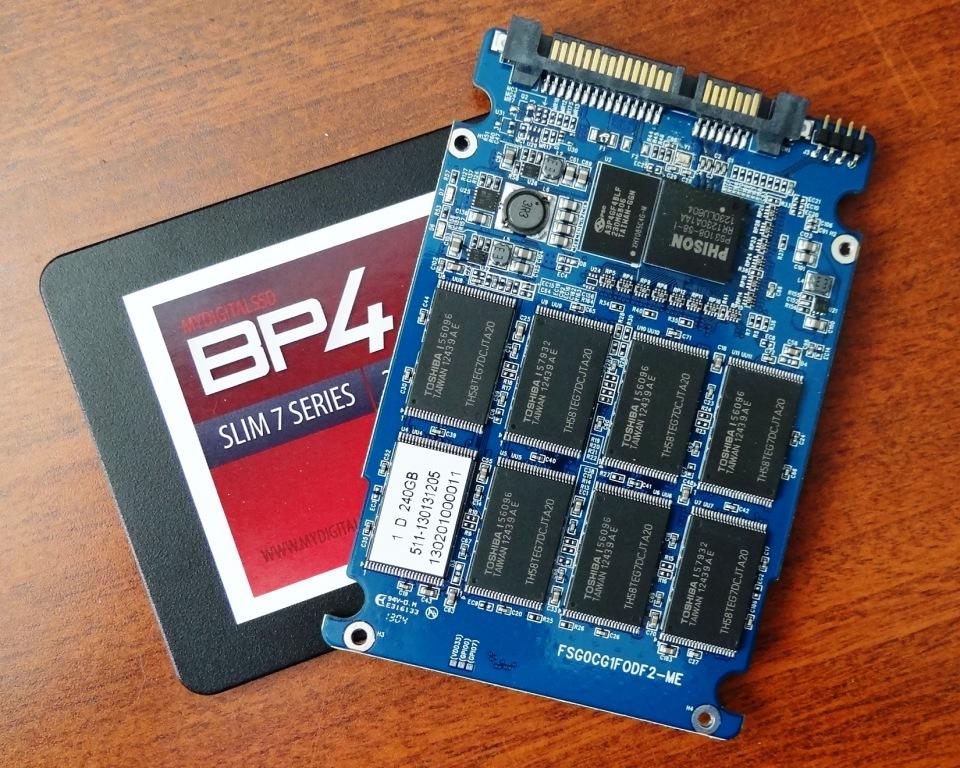 For the price, it will be much higher than analogues.
For the price, it will be much higher than analogues.
Memory types
NAND type — The first and most important one is the type of NAND flash memory being used. There are several types, the reliability of which varies greatly, which affects the cost. The diagram at the top of this article shows the SLC, pSLC, MLC, and TLC NAND types and their associated memory cell states, write cycles, overall reliability, life cycles, and cost. At the bottom of the diagram are the relative sizes and number of bits stored in different NAND cells.
As indicated in the diagram, the largest SLC NAND cell size corresponds to the greatest reliability. Not surprisingly, this is the case, since each cell requires only one bit, and the cell to store this single bit is large. In contrast, in MLC and TLC NAND, more bits per cell are stored in a smaller physical cell, which reduces the gap width between cells. Reducing the gap width results in increased sensitivity to extreme temperatures, write interruptions, flipped bits, data corruption, crosstalk between cells, and other problems.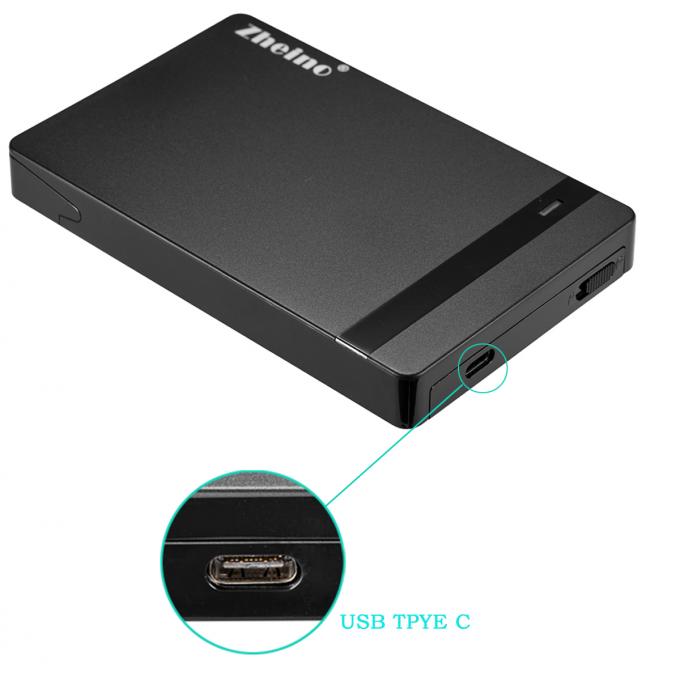 SLC NAND is still available and will be available for at least a few more years in 43nm, 32nm and 24/20nm. Although they are all SLC cell types, 43nm and 32nm have a huge reliability advantage over 24nm and 20nm SLC. If reliability is your priority, stick with 43nm and 32nm SLC NAND based SSDs.
SLC NAND is still available and will be available for at least a few more years in 43nm, 32nm and 24/20nm. Although they are all SLC cell types, 43nm and 32nm have a huge reliability advantage over 24nm and 20nm SLC. If reliability is your priority, stick with 43nm and 32nm SLC NAND based SSDs.
When choosing an SSD, it is also important to consider the type of memory. It affects its performance. There are also several options here:
- SLC . It has a single-level cell, that is, one bit is stored in each cell. The most reliable type of memory. Differs in service life (withstands over 10,000 rewriting cycles), resistance to low and high temperatures, high performance. But at a price quite expensive and rarely used for home PCs. It is initially focused on solving problems of a professional level.
Recently there have been marketing efforts to promote pSLC NAND as an industrial grade, but all is not as it seems at first glance. pSLC stands for Pseudo Single Level Cell and is a NAND MLC (Multi Level Cell) component that only uses the top and bottom states of the cell. At first glance, this seems to be equivalent to SLC, but due to this architecture, MLC has many more issues with random power loss, cell crosstalk, read violation, data corruption, and data retention to consider. It’s about like a tank on a subcompact chassis — you can’t achieve reliability.
At first glance, this seems to be equivalent to SLC, but due to this architecture, MLC has many more issues with random power loss, cell crosstalk, read violation, data corruption, and data retention to consider. It’s about like a tank on a subcompact chassis — you can’t achieve reliability. - MLC . Multilevel cell memory is a product that stores 2 bits per cell. This requires 4 voltage states to represent 00, 01, 10, and 11. MLC NAND components have 25 to 30 times less durability than industrial grade SLC NAND and are not as reliable due to more random loss issues. power, cell crosstalk, read corruption, data corruption and data retention. Supports up to 3000-5000 overwrites. Good for PCs that are used for gaming.
- SuperMLC . Removes the main limitations of SSDs in terms of capacity and write speed. Focused on industrial use: automation systems, engineering machines, fanless PCs. Compared with MLC, the sequential write speed is increased by 4 times.
 The service life is 30,000 erase/write cycles.
The service life is 30,000 erase/write cycles. - TLC . Three-level cell memory — voltage storage occurs at 8 different levels per cell, representing 3 bits (000, 001, 010, 011, 100, 101, 110, 111). The speed of operation is somewhat lower than that of MLC, but the number of write / erase cycles is similar. But it will cost the buyer much cheaper. The performance is about 10 times faster than built-in hard drives. Suitable for home use.
Relatively recently, Samsung introduced a fundamentally new type of SSD drive — V (3D-NAND) to the market. This is the company’s own ultra-high-speed development. Its main difference from analogues is the vertical placement of cells (by default, all disks have horizontal cells).
Controller for SSD
In addition to volume, performance, interface for connecting solid state drives, also pay attention to the controller. This is an intelligent device component that communicates with the computer’s motherboard. It is he who controls the operation of the disk, decides in which cells to write this or that information, corrects the speed, controls idle points, manages the cache, data encryption, corrects data transfer errors, etc. The speed of the disk directly depends on it.
It is he who controls the operation of the disk, decides in which cells to write this or that information, corrects the speed, controls idle points, manages the cache, data encryption, corrects data transfer errors, etc. The speed of the disk directly depends on it.
When choosing it, it is important to consider:
- version. They are constantly evolving, adjusting to the ever-growing demands of consumers. The more modern the controller is installed on the drive, the better.
- Producer. Most companies that produce SSD drives buy controllers from third-party manufacturers. And here it is worth giving preference to reliable brands. And even better — those who produce both controllers and disks. Then they will be maximally compatible.
- Actual drive speed. Choose a price niche and compare the performance of the available options.
SSD manufacturers
Today, there are only a few companies on the market that produce SSD drives.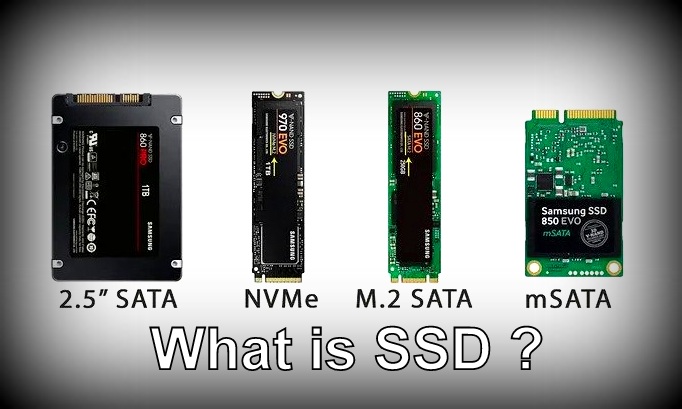 In practice, the products of such brands as Apacer, Innodisk, Cactus Technologies, Intel, Samsung, ADATA, Kingston, Transcend, etc. have well proved their effectiveness and reliability. All of them produce disks in a wide range of modifications and characteristics.
In practice, the products of such brands as Apacer, Innodisk, Cactus Technologies, Intel, Samsung, ADATA, Kingston, Transcend, etc. have well proved their effectiveness and reliability. All of them produce disks in a wide range of modifications and characteristics.
If you are not sure that you can choose an SSD drive yourself, our experts will help you choose the best option for your PC or laptop. You can get advice and professional help by phone or through the feedback form.
everything you need to know
In this article, we will talk about the types of SSD and what you should know before buying.
When it comes to the different types of SSDs (Solid State Drives), most PC users don’t really care what type of SSD they use, it just works fast. Either way, choosing a good SSD is key these days and one of the best ways to make your computer more responsive. Hard drives still serve a purpose, but for optimal PC performance, an SSD is critical.
Of course, we are not here to talk about the various differences between SSDs and HDDs, but to help you understand the different types of SSDs, what size is best for you, and ultimately help you decide purchase.
Contents
- Do I need an SSD?
- Various types of SSD
- 2.5″ SATA SSD
- M.2 SSD
- PCIe SSD expansion card
- What size SSD do I need?
- Best Desktop SSD: Which SSD Do I Need?
- SSD or HDD
- Summary
Do I need an SSD?
Are you still using a hard drive or are you about to build your first gaming PC and are wondering if I need an SSD? Well, the short answer is almost always yes.
- Instant Boot Time — SSDs are the fastest type of storage and are great for booting up your operating system, apps, and your favorite games, while also speeding up data transfers
- Gaming performance — Some SSDs have shown improved performance in some games when compared to slower HDDs.

- No Noise — SSDs have no moving parts, so the system is quieter
- Looking Forward — Your computer, gaming or otherwise, can only benefit from a fast SSD. This not only improves your quality of life, but also allows your computer to stay that way longer.
Various types of SSDs
Every modern PC build will come with an SSD these days, it makes sense. But what are the differences? There are many different types of SSDs, let’s take a look at the types of SSDs and what they are for.
Basically, you can buy three different types of SSDs, but the main differences really come down to form factor and speed.
2.5″ SATA SSD
2.5″ Serial ATA (SATA) is by far the most common type of SSD. These affordable SSDs require two cables, one for power and one for data. This type of SSD is much faster than hard drives and is great for the average user. This type of SSD looks the same whether it’s a laptop or desktop SSD and has been around for a long time. SATA 3 has a limit of around 500MB/s, which means SSDs in this form factor provide read and write speeds around that. They are now considered a more budget-friendly option when buying an SSD, and we recommend choosing M.2 if you can afford it and your motherboard supports it. 2.5″ SSDs usually fit in any hard drive bay, but most modern cases now have multiple mounting options for your drives.
SATA 3 has a limit of around 500MB/s, which means SSDs in this form factor provide read and write speeds around that. They are now considered a more budget-friendly option when buying an SSD, and we recommend choosing M.2 if you can afford it and your motherboard supports it. 2.5″ SSDs usually fit in any hard drive bay, but most modern cases now have multiple mounting options for your drives.
M.2 SSD
M.2 SSD types are smaller models that plug directly into the M.2 slot on the motherboard. They come in two different classes: SATA M.2 and NVME M.2. SATA M.2 drives are similar in performance to the standard 2.5″ SSDs described above and are ideal for gamers, while NVMe SSDs are even faster and very convenient for users who need faster file or application transfer speeds. different lengths: 2280 (80mm) is the most common, but this type of SSD is also available in 2242 (40mm) and 22110 (110mm). It should be noted that NVMe was relatively new a few years ago and runs on the same PCIe lanes that a GPU uses when running a CPU. These types of drives usually have speeds above 500MB/s. M.2 also requires zero cabling and are truly the cleanest and most efficient storage methods.
PCIe SSD Expansion Card
This type of SSD looks more like a graphics processor or sound card than a storage device and plugs directly into the PCIe slot on the motherboard. These SSDs generally rely on the NVMe protocol, unless they have older specifications and are as fast as NVMe M.2 drives. These drives do not require any cables, but will require an empty PCIe x4 or x16 slot on the motherboard.
What size SSD do I need?
When we talk about SSD size, we mean capacity. You can choose SSDs from 128 GB, but they will only be good when used as a boot drive. Some low capacity SSDs may have lower performance due to fewer memory modules and there really won’t be many.
SSD sizes are very similar to other storage devices and start growing from 128 GB to 250 GB, 500 GB, 1 TB, 2 TB, 3 TB, and some models can go up to 4 TB. While a 4TB SSD sounds like a win-win, they come with a price premium that makes them more suitable for specific users who store and transfer large amounts of data.
We recommend a minimum of 500 GB. That’s a nice touch considering the price, but with modern games going over the 100GB mark, a 1TB drive is probably the best option.
The 1TB SSD can run your OS, apps and games without worry, and many PC builders will opt for this with an extra hard drive to store media files or apps that don’t benefit from fast loading.
Best Desktop SSD: Which SSD Do I Need?
Which SSD do I need? Well, I personally prefer to use two 500 GB SSDs instead of 1 TB just in case something breaks, I can still use my computer. The reality is that it will cost the same, and if you go with the M.2 route, you need to make sure your motherboard has enough slots for the configuration you want.
Which you choose will largely depend on your budget, so if you’re looking to spend over $1500/2000 on a gaming PC, you’re more than capable of installing a 2TB SSD in this build. When we get into budget territory it gets a lot more difficult, but any $500 to $1000 build can easily fit on a 480/500GB SSD. When we’re talking about sub-$500 gaming PCs, beware the cheapest 2.5″ SSDs as they can sometimes offer minimal performance gains compared to a hard drive.
SSD or HDD
As already mentioned, the main differences between SSD and HDD are size, acoustics and speed. With these differences comes the most obvious; price! The superior speed of SSDs makes them the best storage types for general use and gaming. If you’re in a position where it’s one or the other, save yourself a few extra bucks and get an SSD. It’s not uncommon to have a dual configuration of both: the SSD takes care of your OS and games, while your hard drive stores your precious data.
Conclusion
There aren’t many different types of SSDs, but now you know the different form factors, options, and capacities. Now that you understand the importance of SSDs and the intricate details that separate them, you can make an informed choice when building a PC or updating your current setup.
The bottom line is that if you don’t need ultra-fast mass storage, the more affordable 2.5″ SATA SSDs will be more than enough. If you’re one of the few who still uses everything on your hard drive, you’ll notice a huge difference if you decide to upgrade.
Types and differences of SSD and the ability to recover data from solid state drives — Starus Recovery
A short “Course into the world of SSD”. Everything about this type of drive, including detailed explanations of the exact terms. Learn how to recover files from SSD.
Not so long ago we discussed the economic difficulties in deciding whether to buy an HDD or still take an SSD. Now we are more inclined towards solid state drives.
Despite the fact that the number of rewriting cycles of these discs is limited, they help to significantly «overclock» the computer. As a result, their shortcomings literally disappear. And if we talk about modern SSDs, they can be used no less actively than HDDs. The fact is that in order to exhaust the number of cells capable of storing, you will have to use the disk for a very long time and hard. In most cases, at least a year.
If you’re just planning to buy an SSD, you must be confused by so many obscure abbreviations like SLC, SATA III, M.2 and NVMe. In this article, we will break down the main differences between SSDs and explain the meaning of the terms described above.
Contents of the article:
- Modern SSD drives are all about cells
- Types and differences of solid state drives
- Single Level Cell (SLC) SSD
- Multi-Level Cell (MLC) SSD
- Tri-Level Cell (TLC) SSD
- Quad-Level Cell (QLC) SSD
- Five Level Cell (PLS) SSD
- Key Features SSD
- Total SSD data capacity (TBW)
- Other terms applicable to SSD
- Data recovery from SSD

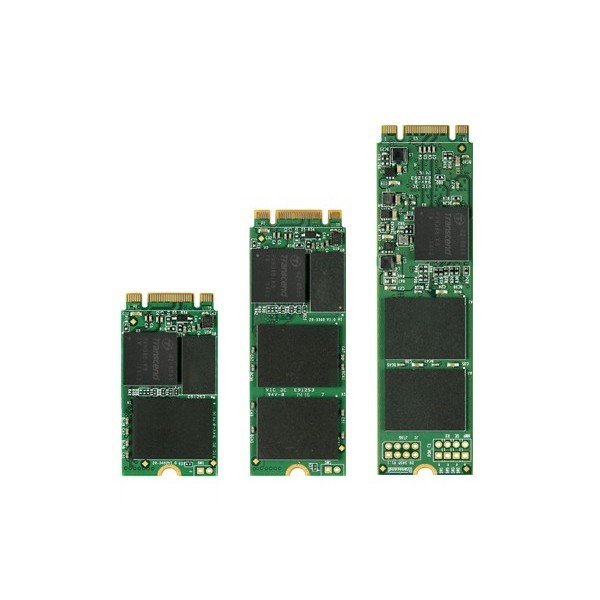
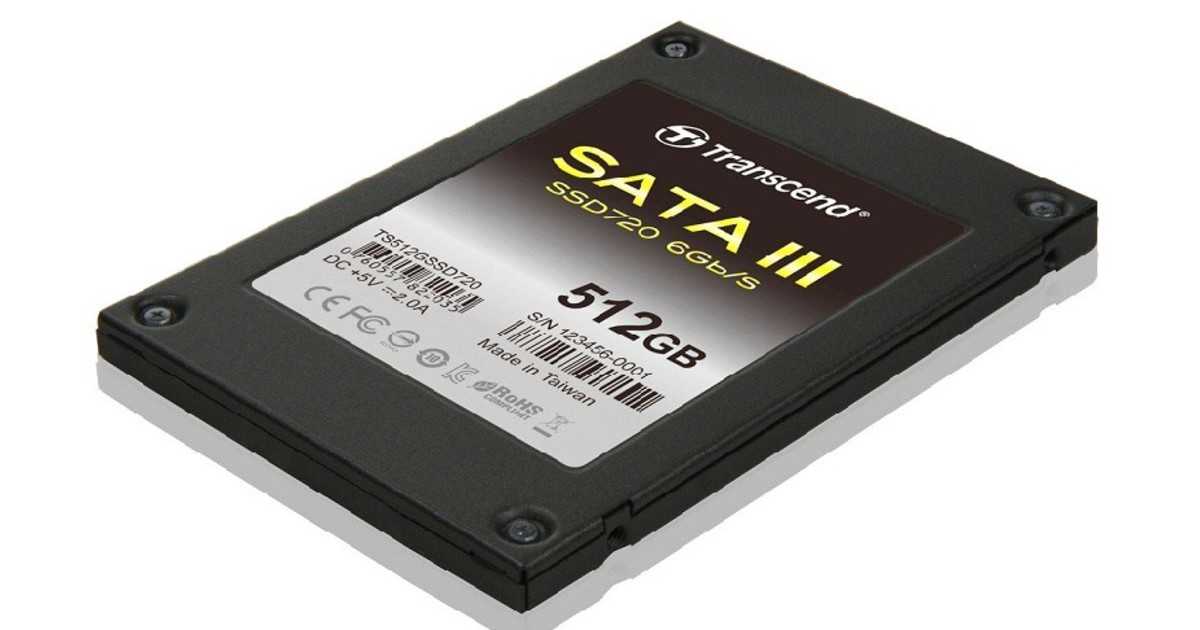 5″, M.2 SATA, mSATA.
5″, M.2 SATA, mSATA.